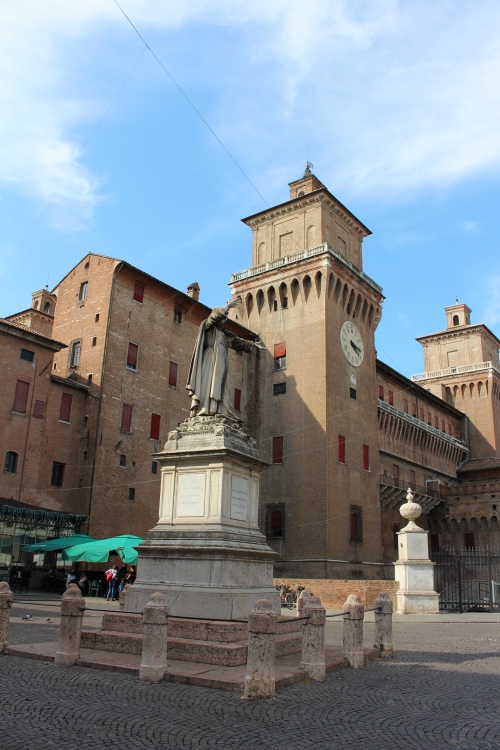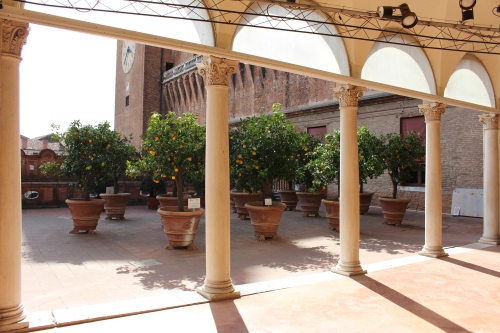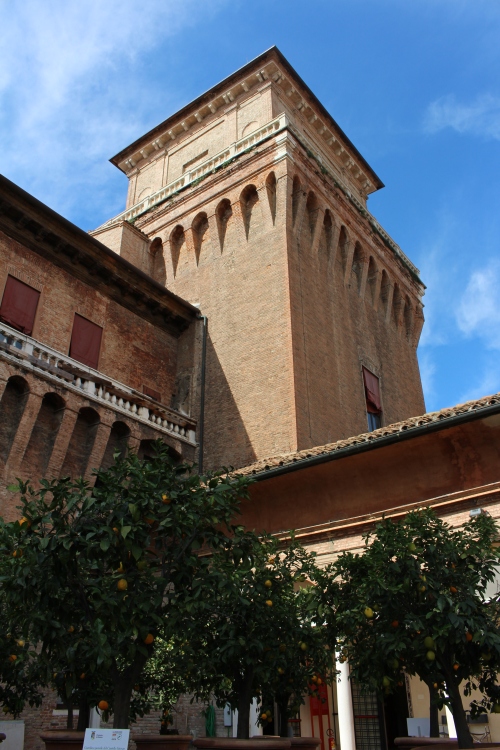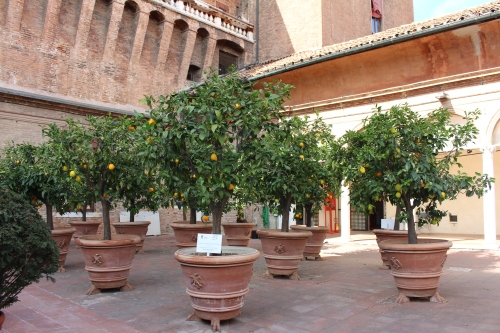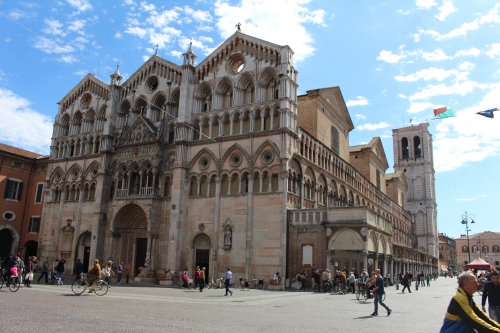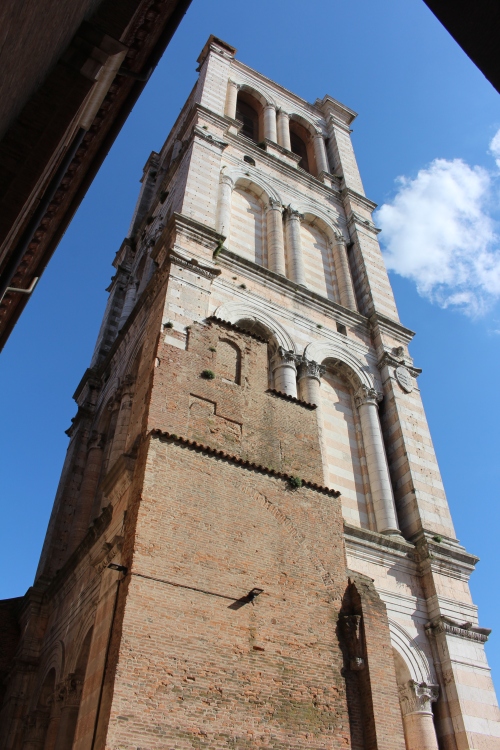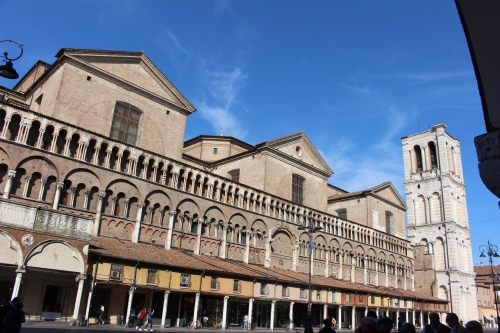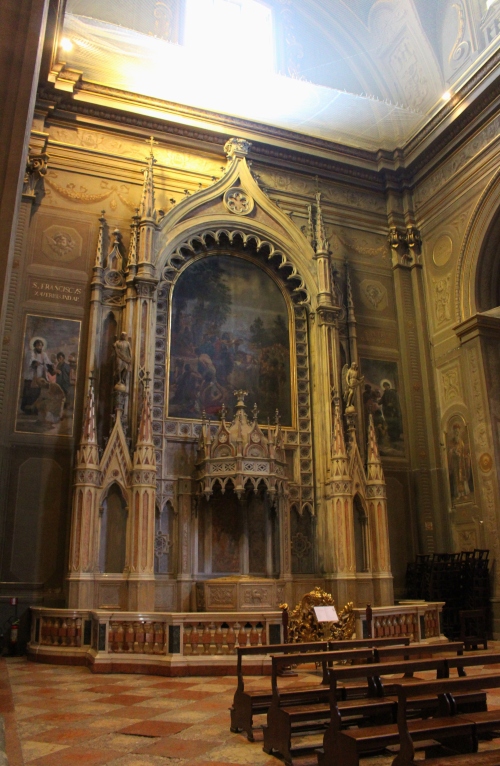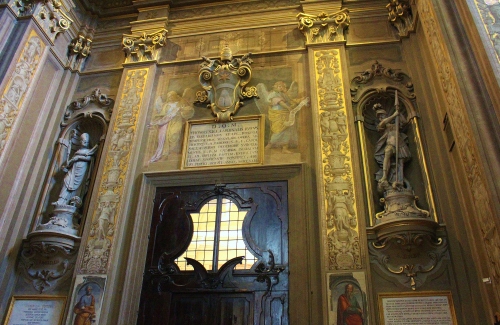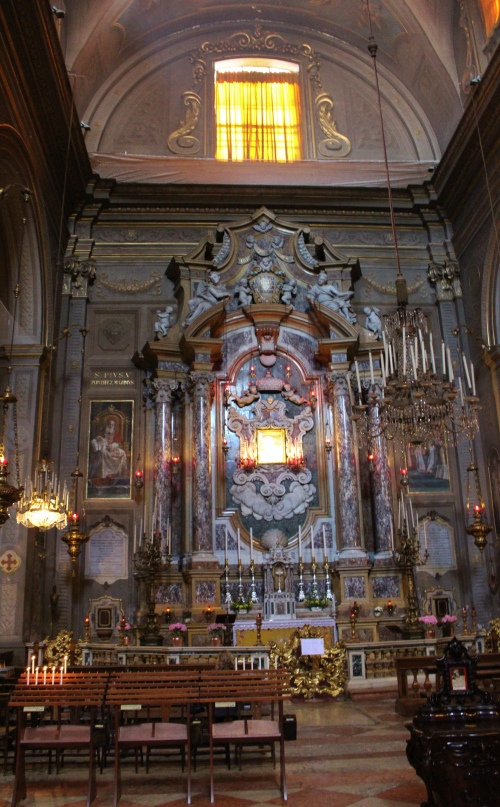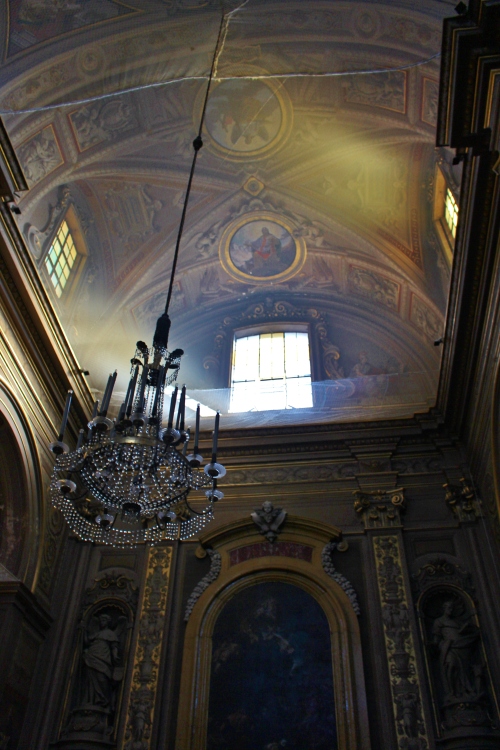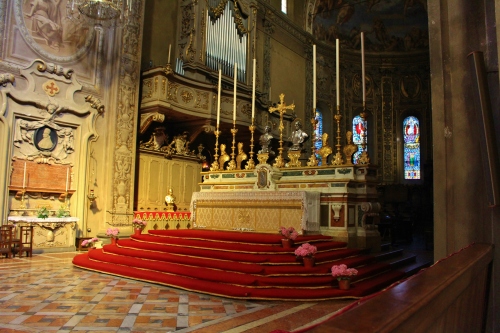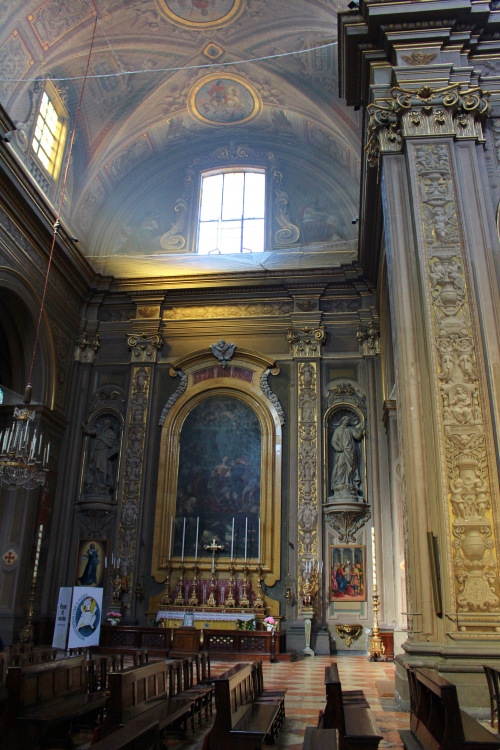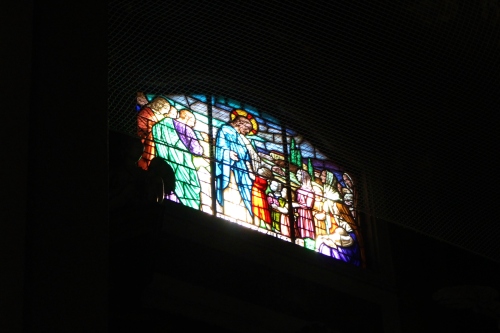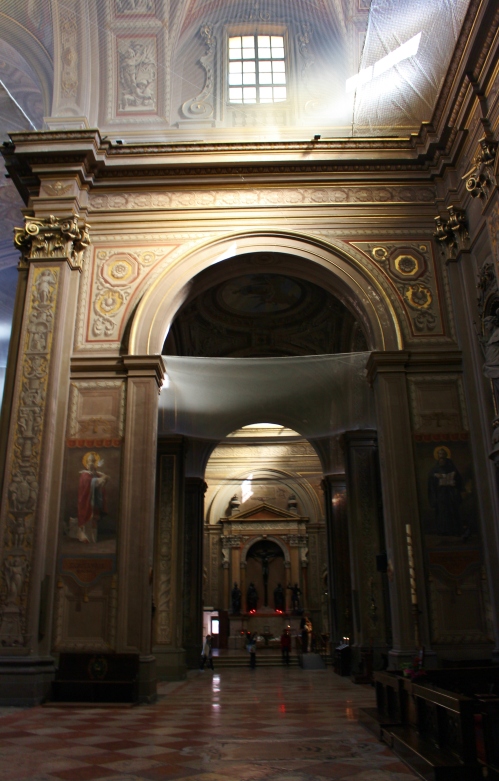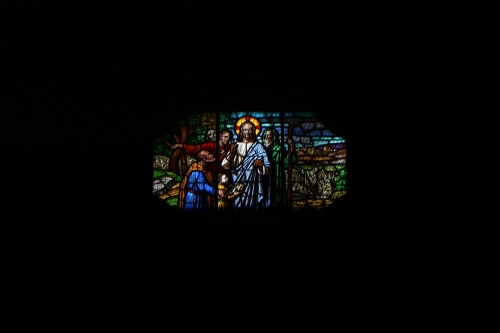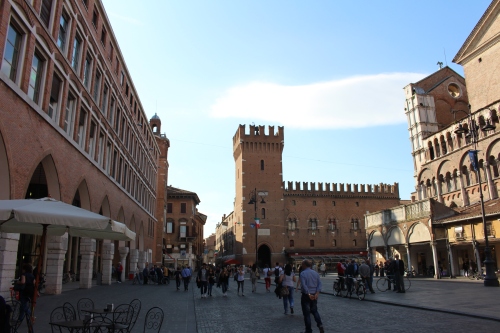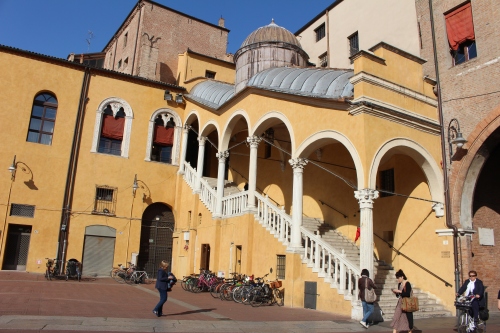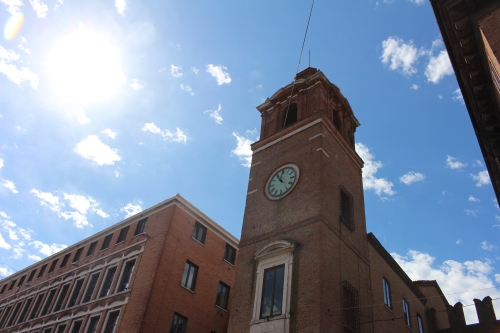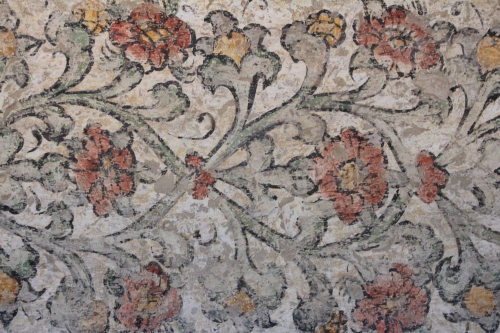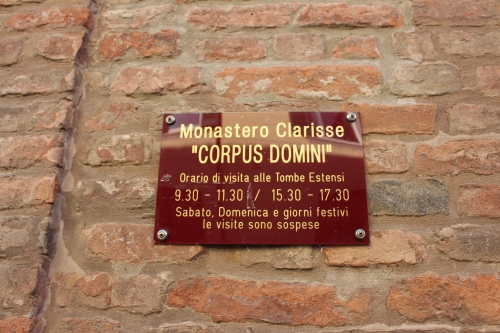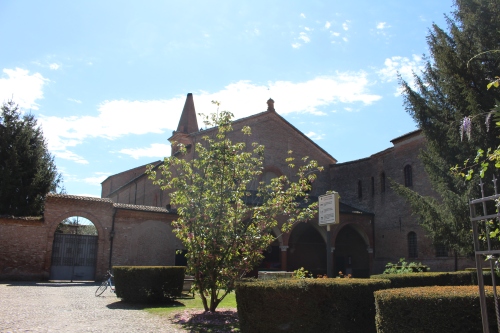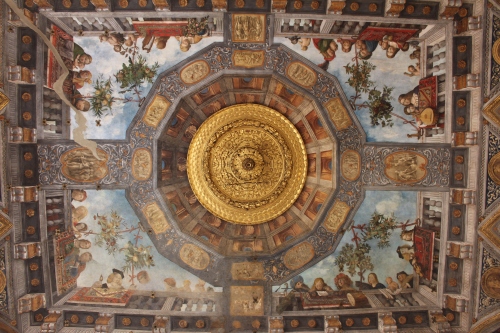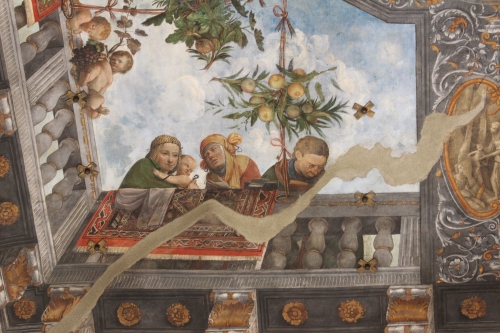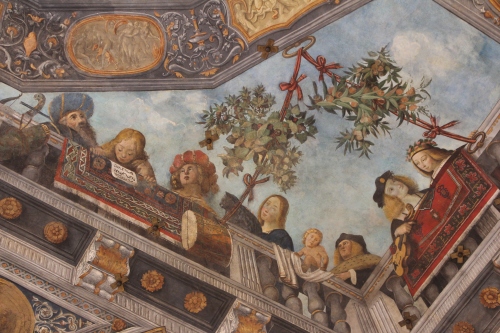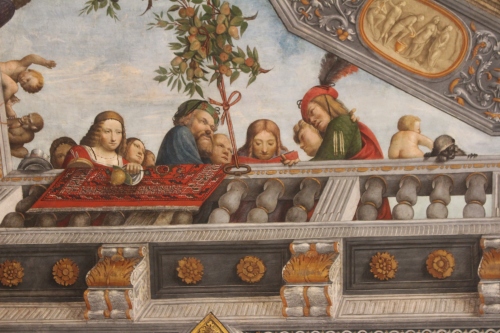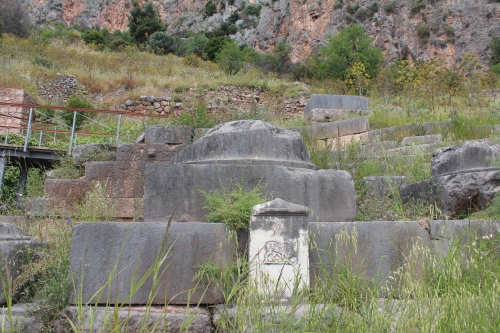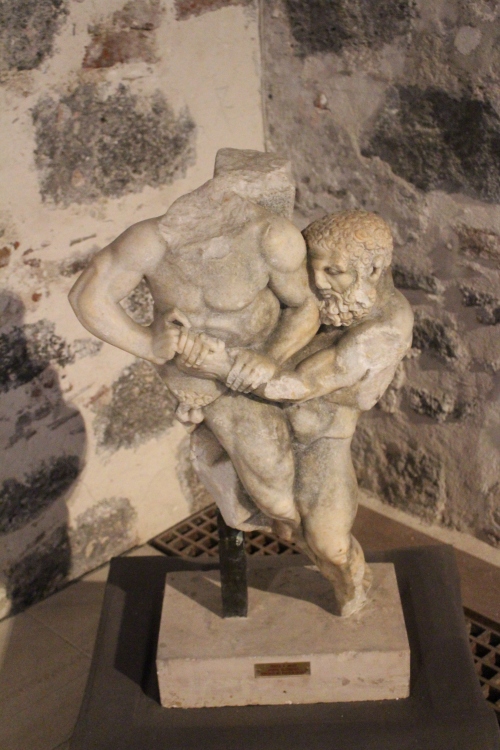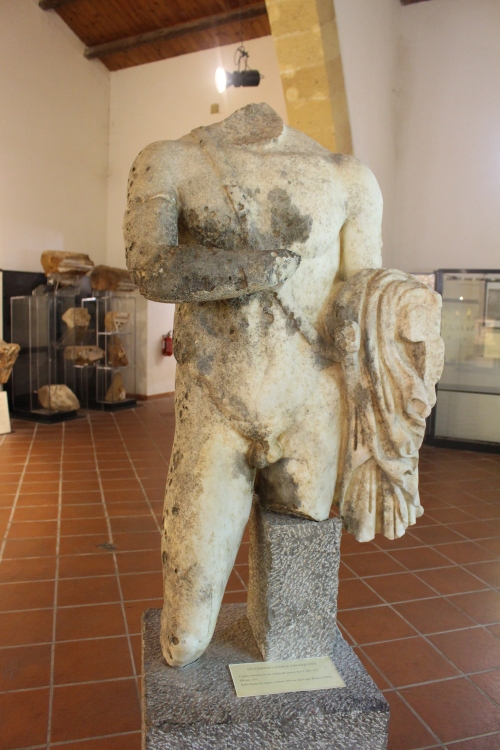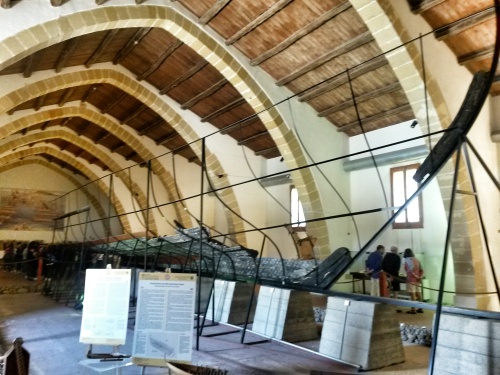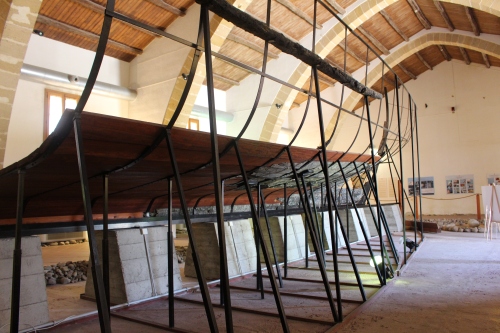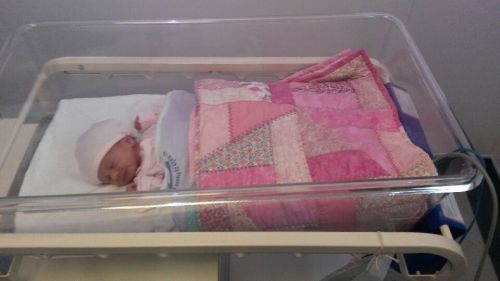14 April 2016
It’s a short vaporetto ride from Sant Elena to Salute. The church of Santa Maria della Salute is open earlier than most so it makes sense to start off my day there and it’s wonderfully quiet first thing in the morning.
This church is so ridiculously beautiful that it’s easy to forget that we have bubonic plague to thank for it. The epidemic of 1630 was particularly savage, claiming a third of the population. 46,000 lives were claimed, 16,000 of them in November alone. Doge Nicolo Contarini vowed to build a church to the Virgin Mary as soon as the plague ceased as she was seen to be a protector of the Republic.
An earlier church and monastery on the site were demolished and nearly 1.2 million wooden piles were driven into the clay bed to provide a solid base for the new structure. A competition was held to find the right architect for the job and a 26 year old named Baldassare Longhena was chosen from eleven candidates for his bold, octagonal design, intended to represent a crown for the Virgin Mary. It is the pinnacle of Venetian Baroque architecture. Construction took several decades and sadly, Longhena never lived to see the church complete.
The style and placement of decoration has definitely shifted from earlier Venetian churches. The exterior is undeniably the focus (just ask Canaletto, among other painters,) and is far more elaborately Baroque than much of what was built in Venice before. Longhena manages to stop short of excessive gaud but it’s clear that Venice wanted to convey that a dose of plague would not be enough to diminish its beauty or penchant for extravagance.
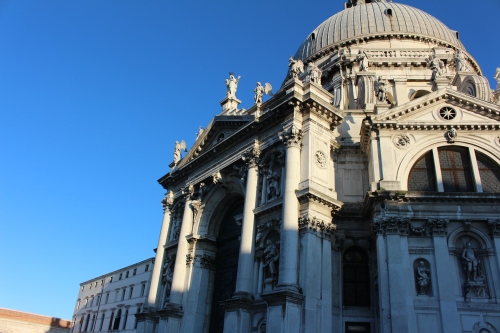
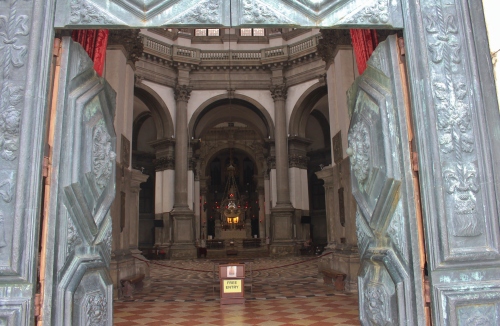
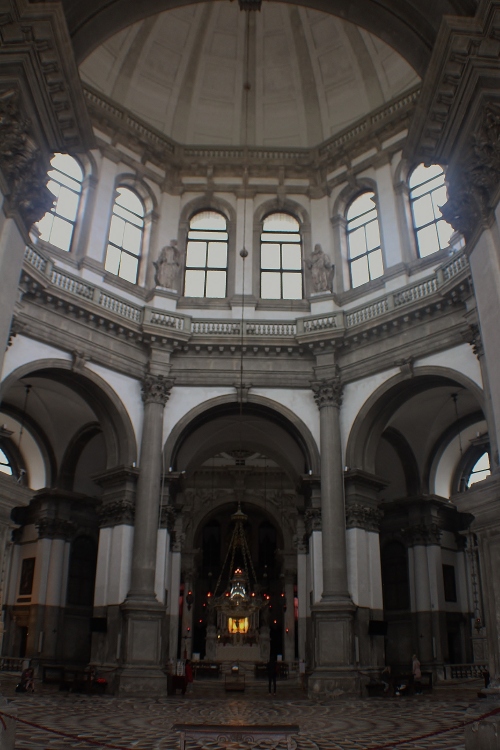
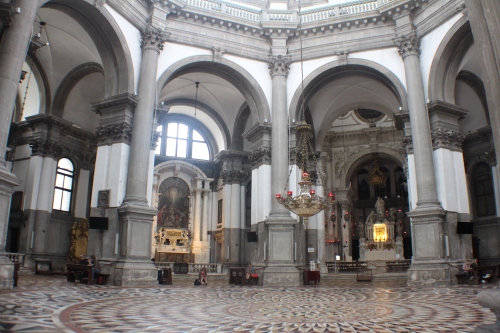
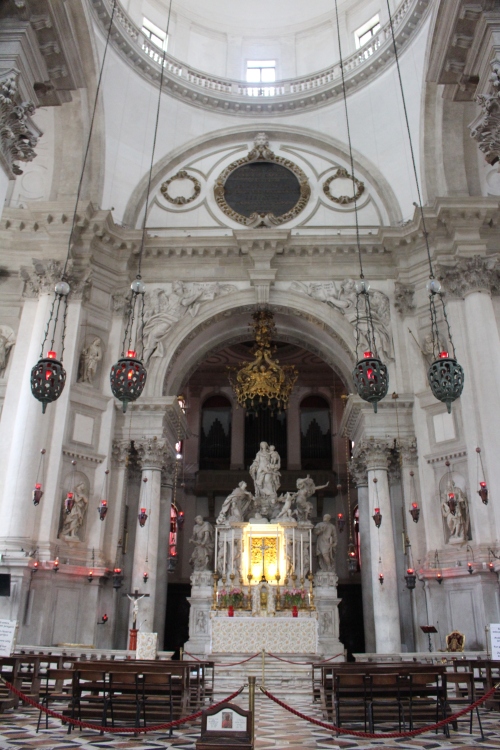
The high altar beyond the octagon
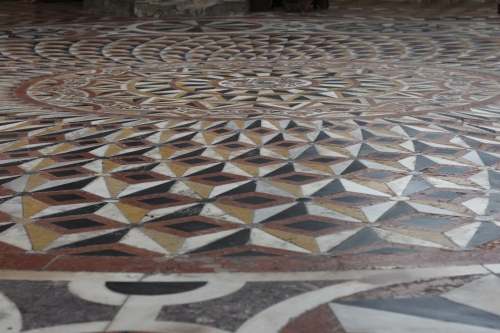
After admiring the church it’s time to hop back across the water to Piazza San Marco where I have booked a tour for the Doge’s Palace. Looking at the snaking queue, I’m thankful that I booked my ticket in advance online and sashay to the ticket desk with only a hint of smugness. I’ve paid extra for the Secret Itineraries tour, and it is WELL worth the extra euros but I’ll save the details for another post.
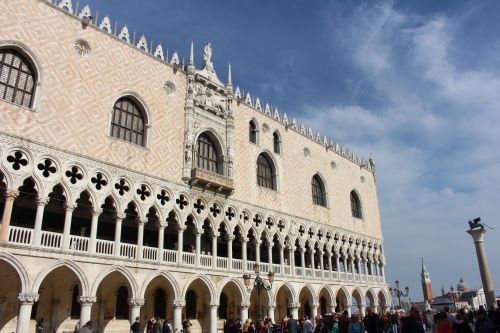
Palazzo Ducale
Today if you google ‘Doge’ the results will all feature a Shibu Inu with a poor grasp of the English language. In Venetian history the Doge was the senior official of the Republic, almost like an elected Duke.
Successive Doges ruled over the Venetian Republic for a thousand years until the 18th century. The Republic was operated by a number of different councils under supervision of the Doge, the most senior being the Great Council. In order to restrict the power of the Doge, the Council could be vetoed by the Doge and the Doge could veto the Council.
The Doge was the only person in the Republic with access to all files and paperwork, many of the councils and committees focusing on a single aspect of government. As such, the Doge was not permitted to talk to any foreigner alone, lest he reveal secrets and betray Venice. The Doge was kept under strict surveillance at all times. His family members were not allowed to hold office during his tenure to avoid nepotism. The Doge could not run any businesses and could not accept gifts in case the Councils accused him of accepting bribes. Neither the Doge nor his immediate family were allowed to leave Venice. As the position was held until death, anyone wanting to be Doge was making a great sacrifice of personal freedom to hold power. What could be offered as a consolation prize? A spectacular residence.
The exterior architecture breaks nearly every rule for a harmonious, attractive building with a mishmash of styles and designs. I’d hardly call it ugly, however. In fact, the effect is beguiling and I can’t wait to see inside. The entrance is in the broglio or arcade on the water-facing side.


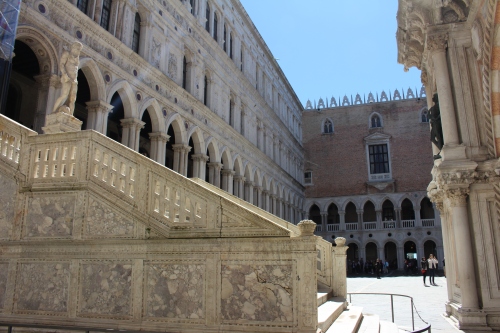
The exterior staircase
This is a staircase that is seen on dozens of postcards and featured in dozens of guidebooks. What I didn’t hear any tour guides mention was its bloody past.
By all accounts, Marin Falier was an irritable man with a sharp tongue. Nevertheless, he had served Venice with exemplary military service and was elected Doge in 1354 at the grand old age of 76. At the time he had been acting as ambassador to the Pope and was trying to negotiate with him to resolve a long dispute with Genoa.
As Doge, Falier could no longer continue with these aims without consulting various councils and as restricted as to how much he could achieve when the Genoese captured 35 Venetian galleys and took 5,000 prisoners at the Battle of Sapienza a mere few weeks after his election. Falier was forced to sign a humiliating 4 month truce which many Venetian nobles took umbrage to.
Frustrated by the limitations of his role and insulted by pompous young aristocrats, Falier planned to wrest control from the nobility and their numerous councils. The role of Doge would have more freedom and more power.
Rumours were spread that the Genoese were planning an attack in mid April. Amid the panic, his conspirators would arm themselves and kill as many aristocrats as possible in ‘protection of the Doge.’
The Council of Ten caught wind of the plot and swiftly rounded up the plotters and hanged ten of them from the windows of the Palace. The following day Falier was led to the top of this staircase and publicly beheaded. His mutilated body was displayed before the crowds and was later buried in an unmarked grave.
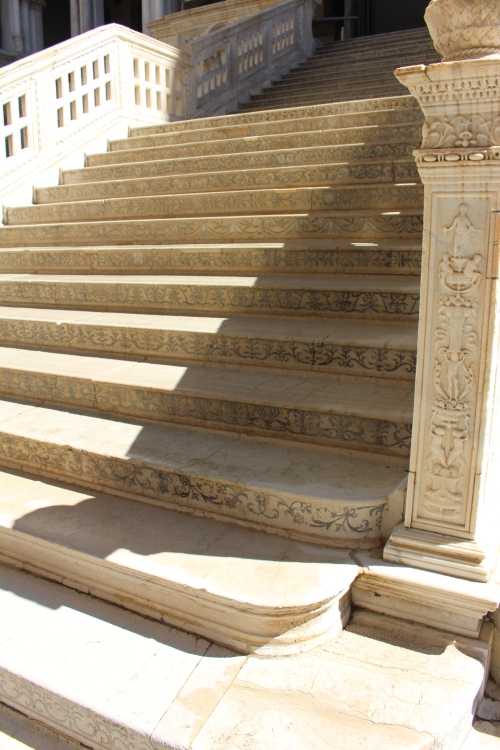
Every possible inch is decorated. There are uglier places to be executed…
The Palazzo Ducale was a lavish residence, a seat of government and state prison. It was the heart of the Republic and is suitably overwhelming for a first time visitor.
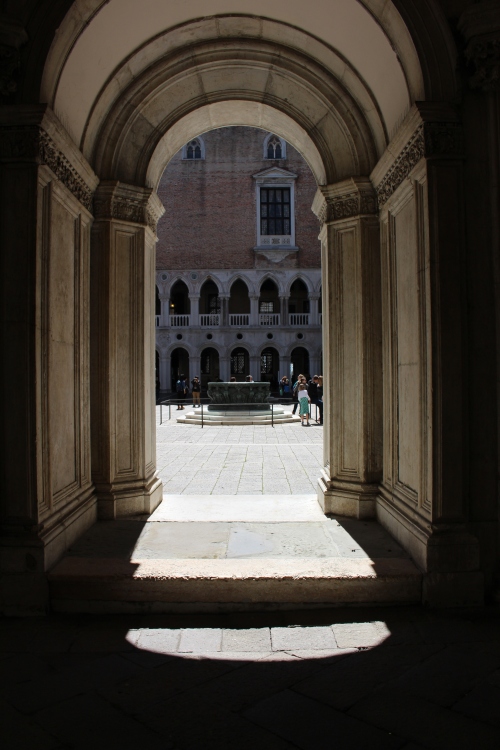
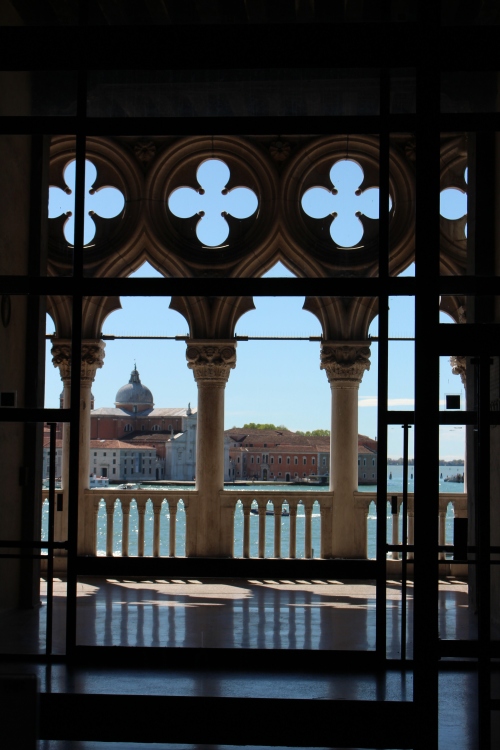
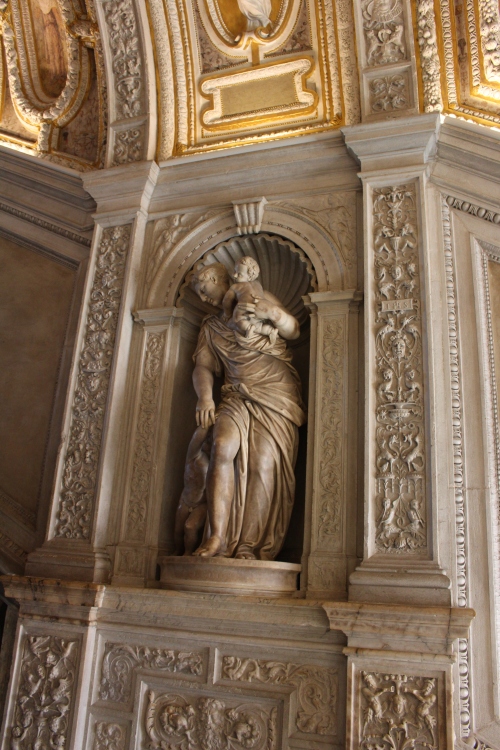
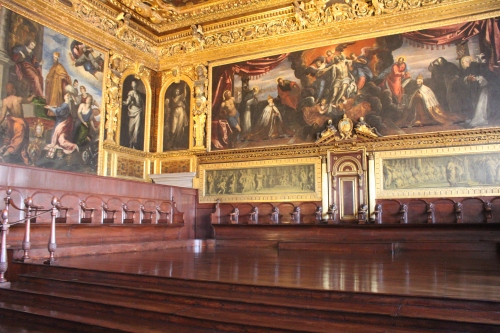
Sala del Senato
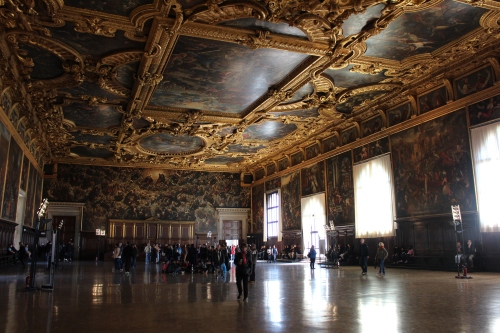
The Sala del Maggior Consiglio – The Hall of the Great Council
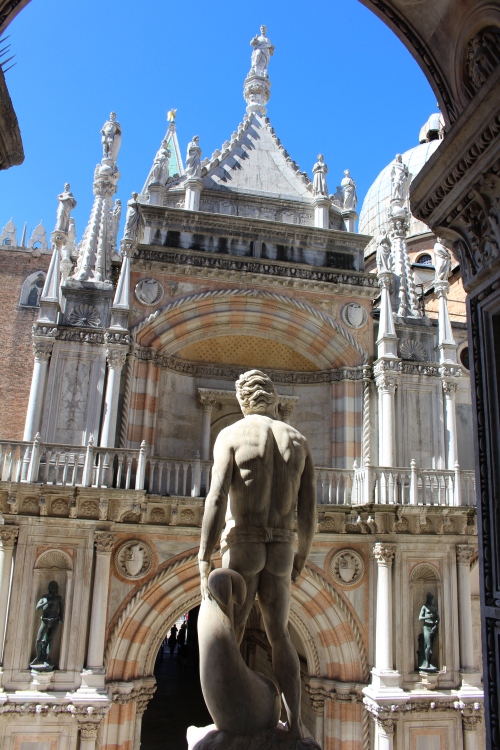
Neptune stand guard at the top of the exterior staircase
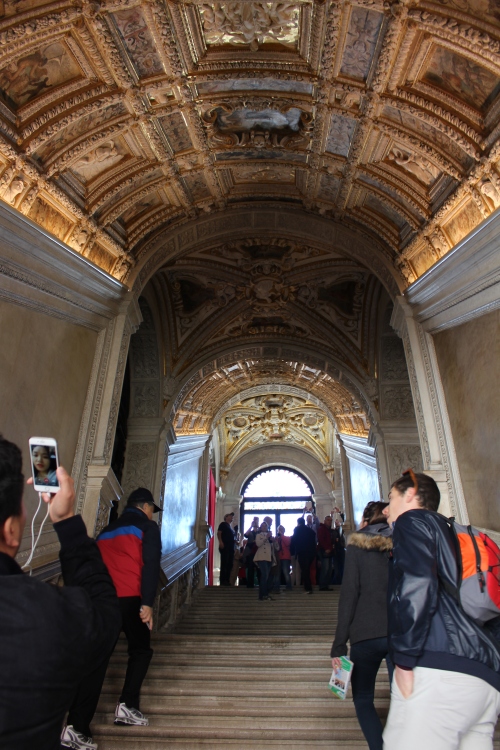
Scala D’Oro – the Golden Staircase
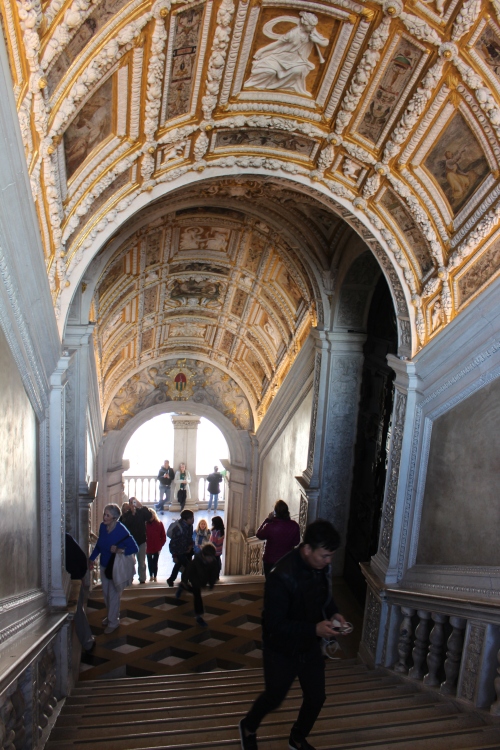
Scala D’Oro
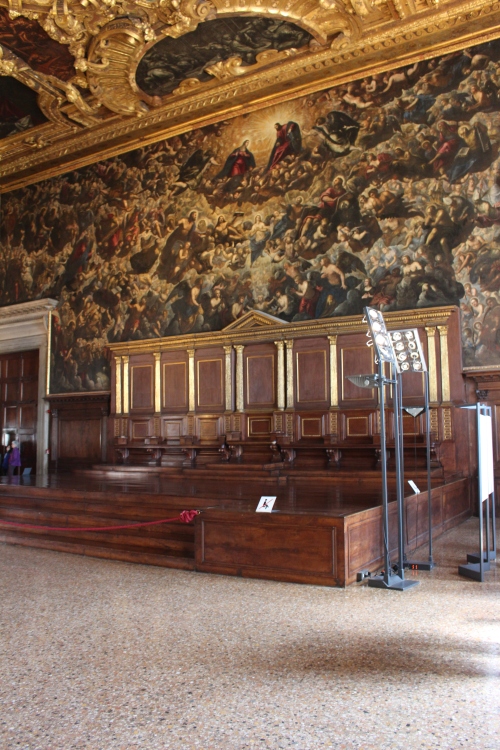
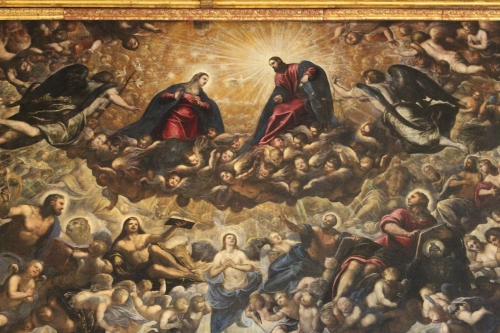
Dante’s Paradise by Tintoretto
I was amused to find that most tourists didn’t realise when they were crossing the Ponte dei Sospiri – the Bridge of Sighs. The bridge was constructed in 1600 to connect the Prigioni Nuove (New Prison) and the interrogation suites within the Palazzo. It was over two hundred years before Lord Byron would give it such a romantic nickname, imagining the sighs that incarcerated Venetians would emit as they crossed the bridge and caught their last glimpses of their city through the stones and iron bars.
Although the interior is plain, the bridge is a beautiful sight from the outside. The view from the Ponte della Paglia allows for some arty shots if you can elbow your way through the crowds…
As tourists leave the Palazzo Ducale many seemed to miss a hidden gem on the corner of the Basilica San Marco:
The Palazzo Ducale is Venetian pride in stone and paint. Popping into a nearby museum is to unwittingly witness its humiliation.
By 1796 the Republic was weakening and a young Napoleon was approaching across the mainland, spending his honeymoon invading the Italian peninsula and fighting the Austrian empire who had controlled parts of Italy since the end of the War of Spanish Succession. Venice, the Papal states and a few other areas had retained independence and Venice was keen to remain neutral whilst the French and Austrians quarrelled on the mainland and rejected an offer from Napoleon to form an alliance, hoping to benefit from trading with both sides.Venice did, however, start to build up military forces. Napoleon was suspicious but Venice replied that neutrality was all that it desired. Napoleon fired off a warning that neutrality did not involve harming the French nor aiding the Austrians.
Venice had grown complacent, the navy had been allowed to shrink to a handful of old fashioned ships. Venice could not afford to make enemies and perhaps underestimated Napoleon, who despised Venetian decadence as much as he had despised the French nobility that had so recently been swept away. Venetian treasures could fund his army for years to come. Venice needed to be cautious and yet demanded compensation every time Napoleon led troops through Venetian territory whilst also allowing Austrian troops passage. Napoleon was getting angry.
At the entrance of the lagoon is Fort Sant’Andrea, a relic of the Venetian military might in the 16th century. In April 1797, three French ships anchored by the fort, possibly seeking shelter. The Venetian commander in the fort decided that the tiny French fleet was a threat and took the fateful decision of opening fire. Two ships sailed away but one decided to remain and the fort commander continued to fire. Even after the French ship raised a white flag, the cannons of the fort kept firing. The French captain was killed along with four of his crew. Napoleon was enraged and proclaimed that he would be an “Attila to the Venetian State.” French artillery along the shores of the lagoon were trained on Venice.
On the 12th May, in the Sala del Maggior Consiglio, the grandest room within the Palazzo Ducale, the Doge, Ludovico Manin, proposed that Venice should dissolve its government and submit to French rule. 512 of the assembled patricians voted for, only 20 voted against. The Venetian Republic was dead. On the 17th May 7,000 troops entered the city. Napoleon stripped the city of treasures and sent them back to France. As a final insult, the Venetians learnt that the French had no intention of occupying the city. They had been signed away to the Austrian Empire in the Treaty of Leoben. The treaty had been signed weeks before the Doge decided to abdicate, Napoleon had been so assured of victory.
It’s a short stroll across the Piazza to the Museo Correr at the opposite end from the Basilica. Even those exhausted with museums should pop into the cafe for a drink and this view of the Piazza…
The two buildings running perpendicular to the Basilica are the Procuratie Vecchie and the Procuratie Nuove and the floors above their arcades were for the offices and apartments for the Procurators of the Republic.
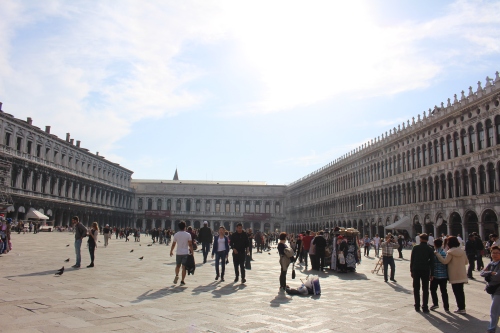
The building that now joins them is the architectural reminder of the fall of the Republic. It is known as the Napoleonic Wing as it was built on the orders of Napoleon’s stepson Eugene Beauharnais in his role as Viceroy of Italy, the French having temporarily retaken Venice between 1805 until Napoleon’s fall in 1815. The new wing was finished in 1813 as a residence for Beauharnais and after 1815, the Hapsburg court.
As a nation who were so careful to prevent nepotism, Venetians must have hated to see a palace built for a man in power only through his stepfather, however competent Beauharnais turned out to be. It must have been even worse to see the place occupied by inbred Hapsburgs.
The building now houses the Museo Correr which documents Venetian life and culture. The collection was brought together by Venetian aristocrat Teodoro Correr, who donated everything to the city when he died in 1830. Steadily growing ever since, the collection was moved to this location in 1922 and spills into the Procuratie Nuove.
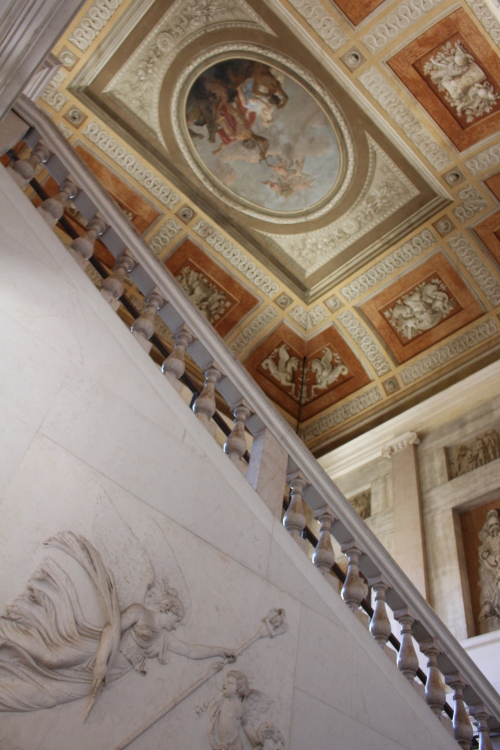
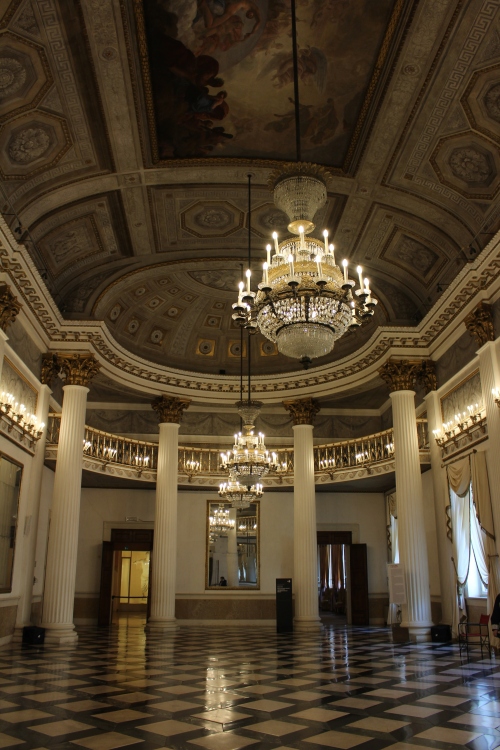
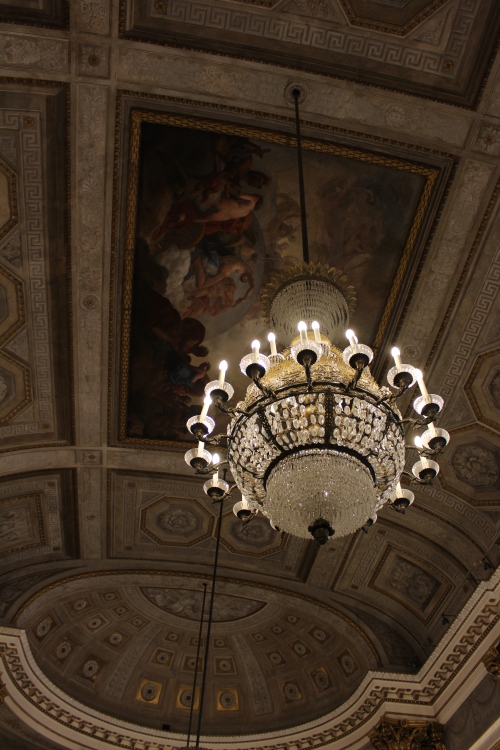
You can access the National Archaeological Museum from within the Museo Correr. The collection of Greek and Roman antiquities was mostly formed by the Grimani family in the 16th century. It’s easy to see where Venetian sculptors took their inspiration from.
Make sure to pop into the Sala D’Oro or main hall of the Biblioteca Marciana, or national library. The library of Venice is now housed in La Zecca, the old mint, making this room easier to admire.
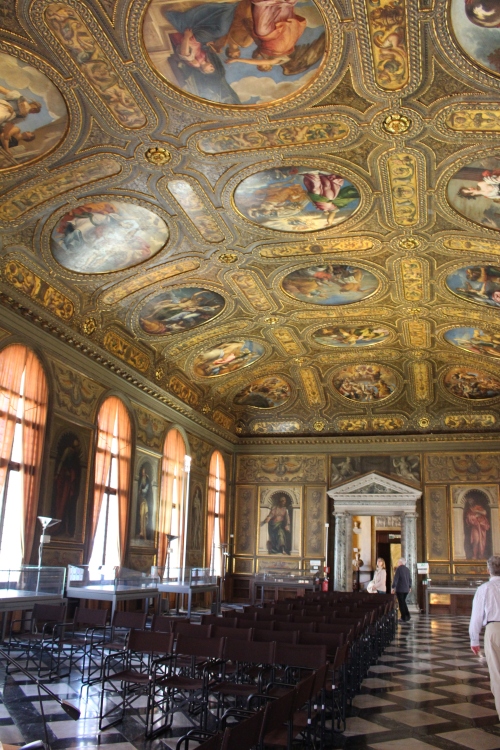
Walking between these museums and the pontoon for my next vaporetto, I glance at the exterior of the Biblioteca Marciana which may pop up in some guidebooks as the Libreria Sansoviniana.
After a great fire in 1514 a passion for classical architecture took hold in Venice. An architect called Jacopo Sansovino became the darling of the Venetians. He was a charming Florentine with a quick with and a taste for cucumbers. In 1529 he was made the Protomaestro of the Procurators of San Marco, essentially state architect, as the authorities liking how his classical designs complemented the Venetian Gothic style.
He designed a loggia to adjoin the campanile, the Zecca housing the mint and several grand churches. Above all, his masterpiece was the Biblioteca Marciana.
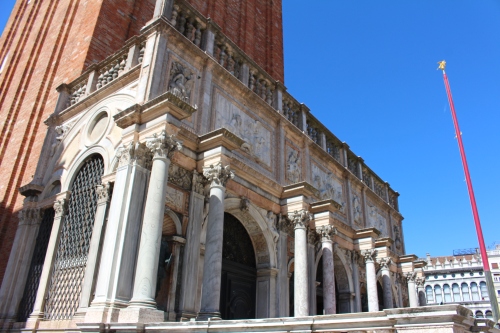
The Campanile loggia by Sansovino
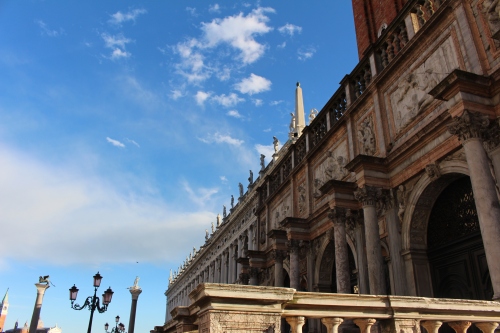
Facing the Ducal Palace across the Piazzetta, creating a beautiful building that blends into the Piazza must have been a daunting task. Sansovino decided to go with a design that could have been lifted from ancient Rome, then gave it a distinctly Venetian twist.
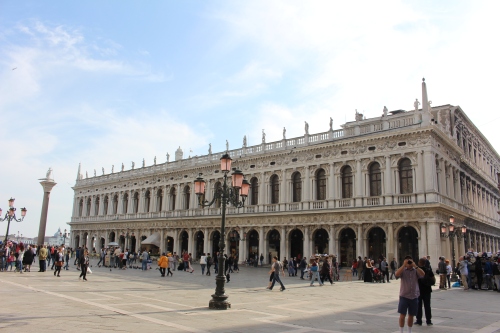
Biblioteca Marciana
Unfortunately for Sansovino none of his charm could save him when in December 1845 the first floor collapsed, eight years into construction. Whatever the cause (Sansovino blamed anything from frost to distant gunfire,) the Venetian state treated him like a general after a military defeat, holding him personally responsible and throwing him into prison. Sansovino was made to pay for the repairs out of his own funds, which took him 25 years to pay off. He may have been able to hear the hammers from his cell within the Palazzo Ducale opposite. Thankfully for Sansovino, his famous friends Titian and Aretino managed to negotiate his release.
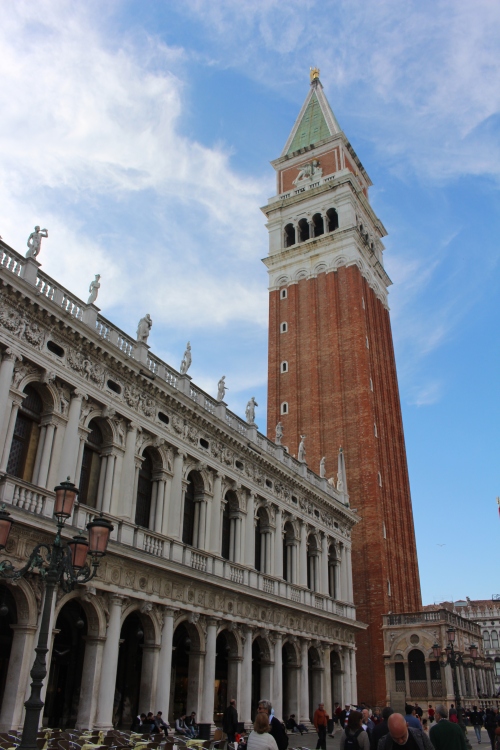
This career setback paved the way for the rise of his rival, Andrea Palladio. This makes it incredibly fitting that I’m heading to the San Marco pontoon to hop onto a no.2 vaporetto to San Giorgio Maggiore.
Palladio was a man of bold designs that had previously been rejected in Venice in favour of Sansovino. Now, Palladio had a chance to shine. The design for San Giorgio Maggiore is like Roman classicism with a few strong cups of espresso added for punch. The church looks lovely from the Riva degli Schiavoni or the Dogana, up close it is awe inspiring. It’s not enough to see this church from a distance, although it sits so perfectly placed in relation to the Piazza and Santa Maria della Salute that anyone would think Palladio put the island there on purpose. Just ask Marco Boschini, a 17th century painter:
“This island is truly a jewel, set in this crystal which surrounds it
where ebbing and flowing the waves beat.
Doesn’t it look as if it were done with a paintbrush?”
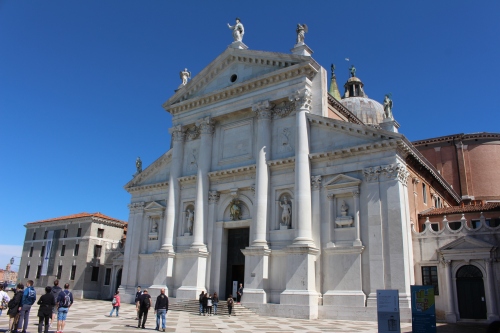
Initially commissioned to improve some monastery buildings on the tiny island, Palladio was soon asked to come up with a replacement for the old, existing church. The new church was started in 1566 in the presence of the Pope.
It’s clear to see that Palladio had a fascination with the buildings of ancient Rome. Unfortunately for Palladio, ancient temples were a bit too pagan looking to copy outright and Christian churches had aisles to consider. Palladio works around that issue here by layering two temple-esque facades together. The tallest shows the height of the nave and interrupts the wider, lower pediment that shows the width of the aisles.
Palladio can’t resist a good old Roman dome, either. The interior of the church is huge and cool, with lots of light flooding in from high windows.
Palladio lived to see most of the church completed.
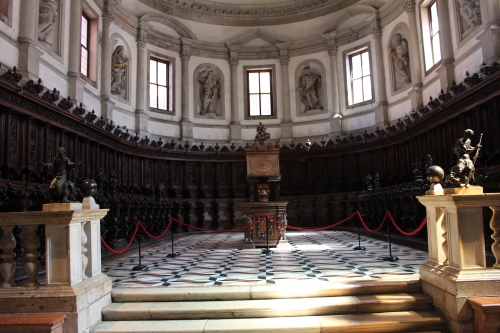
The monastic quire
The campanile is a later addition to replace a tower that collapsed in 1774. For a few euros (about half the price of the San Marco campanile with no queues…) you can whisk up to the top in the elevator. On a clear day, you’ll be rewarded with this…
A quick vaporetto ride back to San Marco later leads to a pleasant walk to find San Zaccaria, a church with odd opening hours but well worth tweaking your itinerary for.
Campo San Zaccaria feels hidden away and even with a map I felt that I stumbled upon it by accident. The quietness of the square belies its rowdy history.
In 864 Doge Pietro Tradonico was stabbed by assassins after attending a service in the church. Riots ensued and the nuns of the convent had to wait until night had fallen before it was calm enough for them to retrieve the body for burial. His successor hunted down the conspirators and within four months they were all executed.
In 1171 Vitale II Michiel led the Venetian navy to attack Constantinople. The attack failed, the lengthy peace negotiations were bungled and all Michiel succeeded in bringing back in 1172 was an outbreak of plague having already lost thousands of Venetian sailors to the disease. Michiel attempted to defend his actions before the increasingly furious crowds and eventually attempted to flee and seek sanctuary in San Zaccaria. He was fatally stabbed before he reached the gates. Afterwards the crowds were ashamed of their violence and turned their rage on the attacker, Marco Casolo. Casolo was executed and his house on the Calle de le Rasse torn down, an edict soon followed that no permanent building should be erected on the site. This edict was upheld until 1948.
Not that San Zaccaria was only notorious for blood spilt and lives lost, of course.
The convent in particular was famous for raucous nuns. Venice was not unique in sending its daughters to convents. Some families could not afford dowries for more than one or two daughters and sent the others away to avert bankruptcy, for some a convent was a dignified alternative for those who failed to find a willing husband. However, this is still Venice. These women were still vivacious, cultured and accustomed to a certain lifestyle. Numerous accounts of Venetian convents mention that nuns didn’t bother to wear habits and instead chose to wear the same daring, sumptuous dresses as their married friends. They curled their hair and wore jewellery, decorated their cells with expensive and comfortable furniture and held parties. Some took lovers, others took several lovers and some managed to have children. Convents hosted masquerade balls and parties with free flowing wine, lots of dancing and attractive male guests. Venetian nuns were, by all accounts, well, Venetian. To be honest, the life of a Venetian nun can even seem enviable compared to the lives of her married relatives. Whilst the government frowned upon licentiousness in convents, many Venetians were sympathetic to these women who had been forced into a life they would not choose, usually due to the financial constraints of her family.
In the sixteenth century officials were sent to San Zaccaria to shut down a particularly rowdy soiree. The nuns responded by pelting the officials with sticks and stones until they gave up and fled.
The exterior of the church is a mish mash of Gothic and Renaissance styles designed by Antonio Gambello and started in the 1440s on the site of an older church. The interior is pure dark, brooding Gothic with Renaissance paintings.
Entry to San Zaccaria is free, but do look for a member of staff at a desk on the right. For a few coins, they will let you in to see the incredible Capella di San Tarasio.
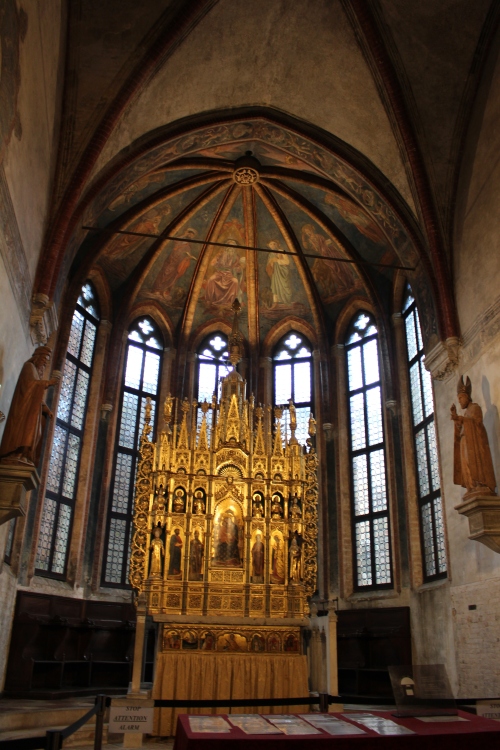
Even better than the chapel is the crypt beneath, accessed by a pair of tiny staircases. Obviously, crypts are rare in Venice. This one is particularly evocative and one of my favourite places in the city, even with its sad past.
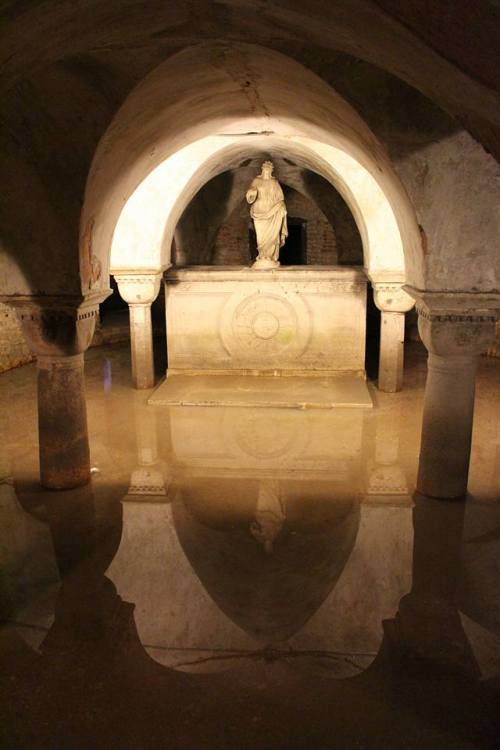
The sun is setting for the final time during my visit, so there is only one place I want to be; the Piazza. A short walk back and I’m back among the crowds, but mercifully there are no queues for the second campanile of the day.
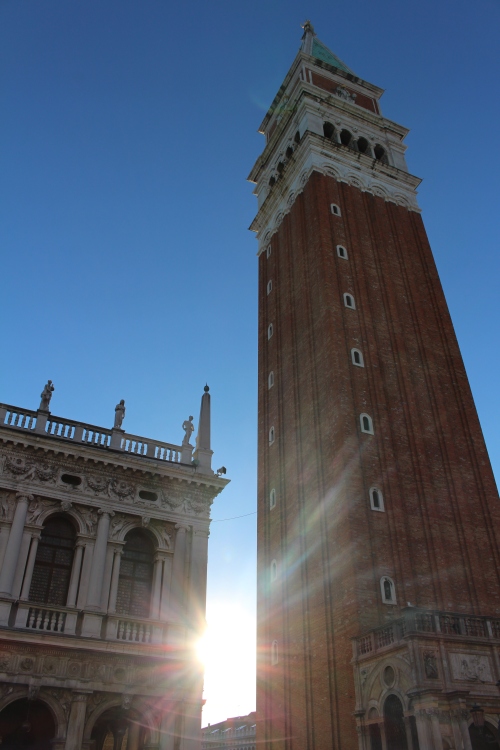
The Campanile was built in the early 16th century to replace a smaller tower. It collapsed in 1902 (miraculously only killing the caretaker’s cat,) and was rebuilt a decade later to be an exact copy of the original.
A belltower, watchtower, landmark for mariners and subject of dozens of paintings, even the Campanile has a hidden past.
Supplizio dela Cheba was a form of torture. Cheba is Venetian dialect for ‘rabbit hutch.’ A punishment for clergymen guilty of murder, sodomy, blasphemy or forgery was to be hoisted in a small wooden cage up the south side of the Campanile. He was allowed a basket on a rope so that he could haul up dry bread and water. This punishment would last a few days for most, although apparently a sentence passed on Christmas Eve 1391 saw Jacopo So kept in the cage until he died as punishment for murdering a priest. The practice ceased at the end of the 15th century.
The Emperor Frederick III of the Holy Roman Empire apparently didn’t want to climb the stairs to the top in 1452 so instead rode his horse up the winding staircase. The Campanile was also the scene for Galileo to show his newly invented telescope to the Doge in 1609.

Shadows over the Palazzo Ducale

The Dogana and Santa Maria della Salute
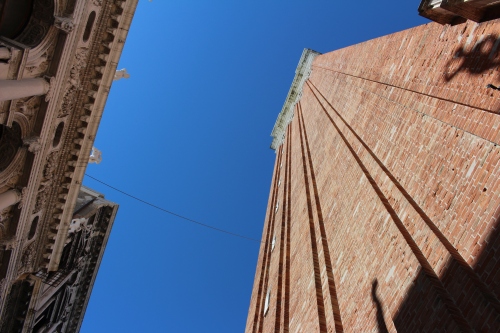
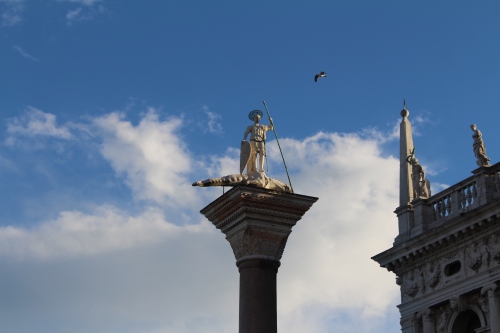
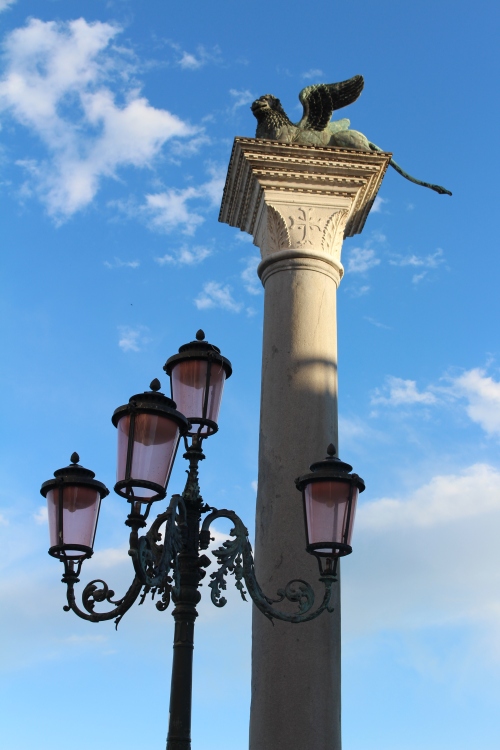
I have one night left in Venice. Determined to make it last, I hop across the entrance to the Grand Canal to view some landmarks in the dying light.
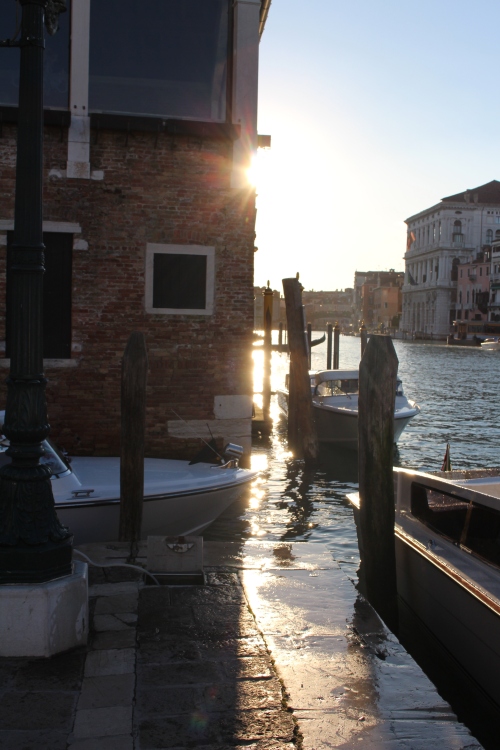
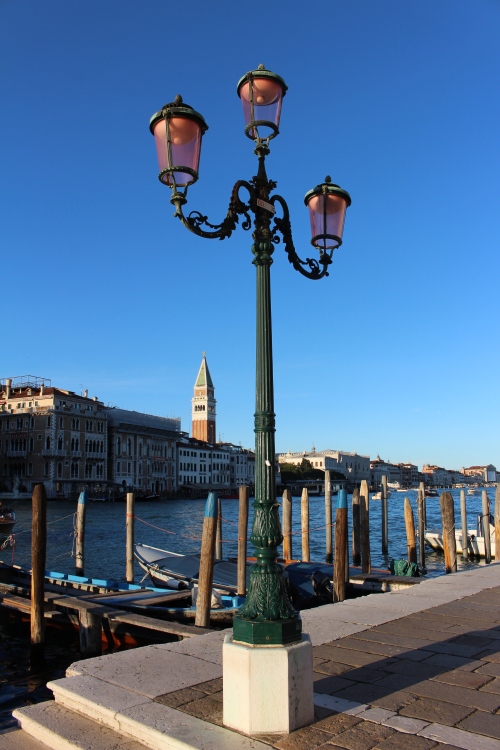
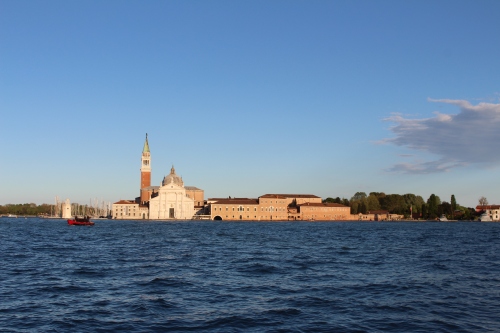
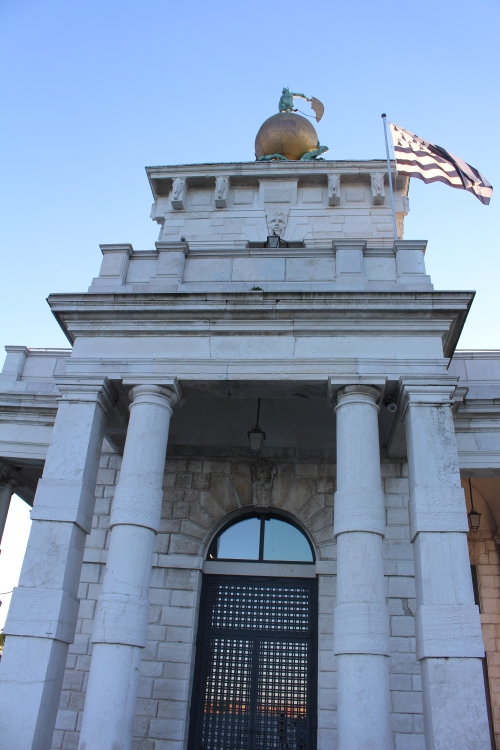
The Dogana – The Customs House
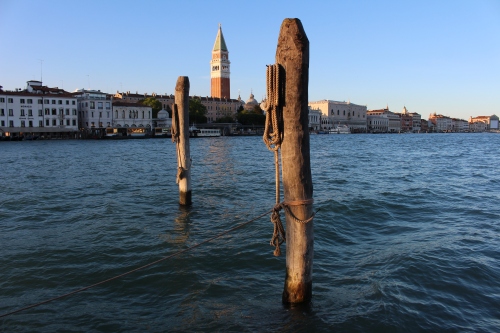
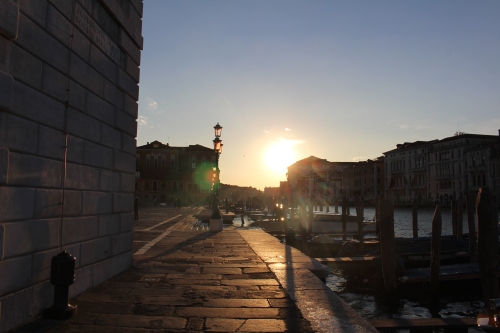
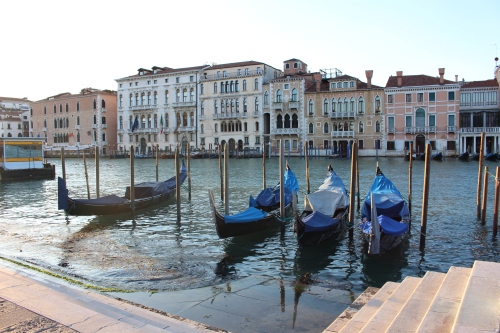
With that, all that’s left to do is jump back on a vaporetto to Sant Elena for the final time, staring longingly at the view the entire way…
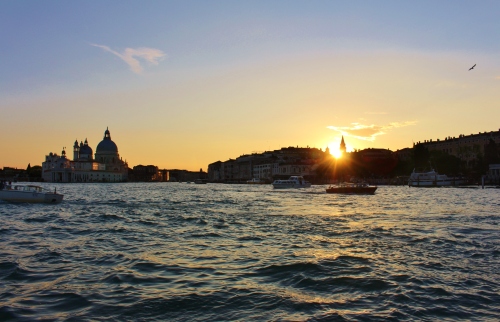
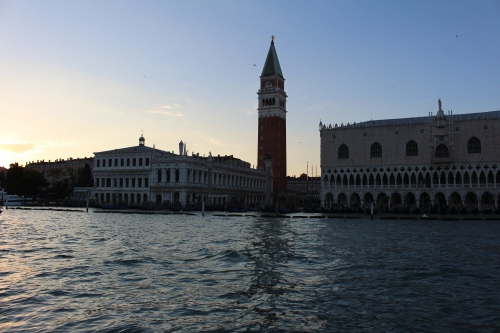
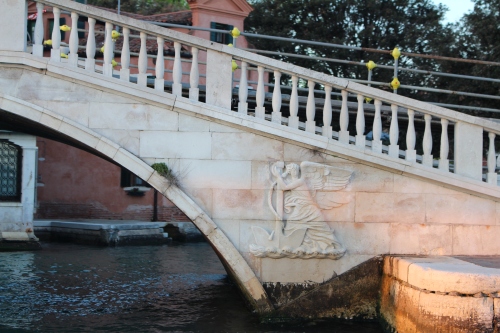
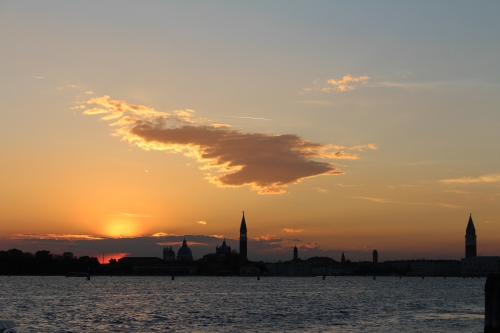





































































































































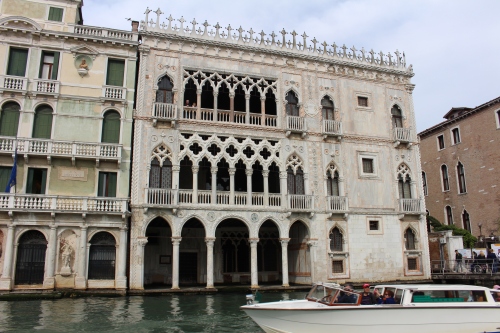







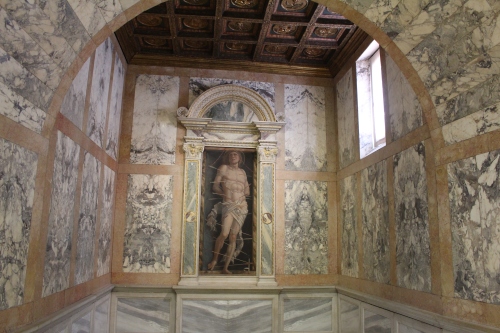
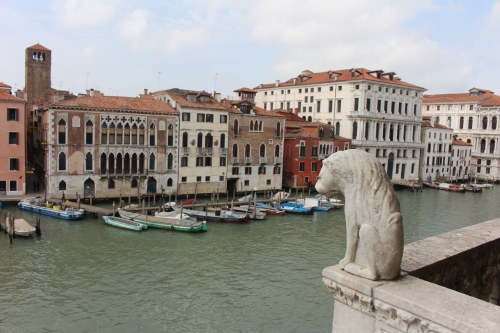








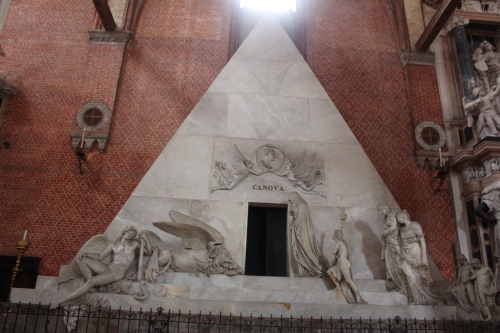
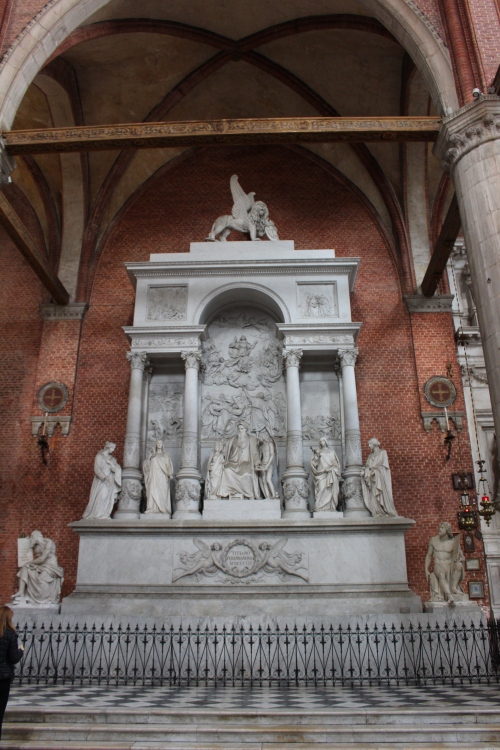
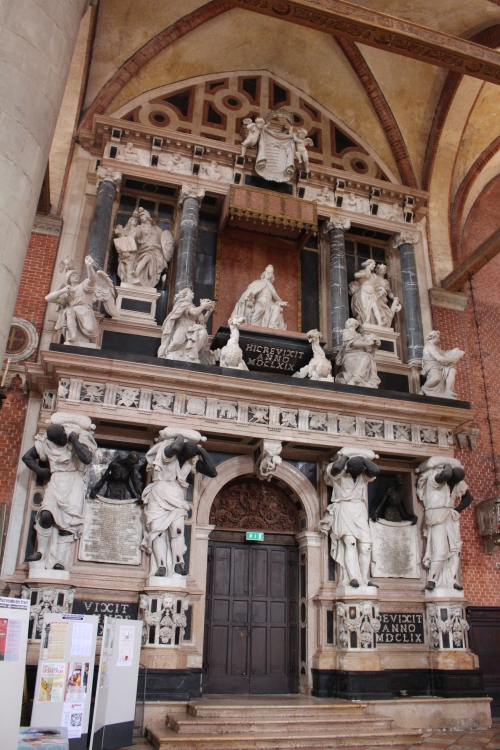
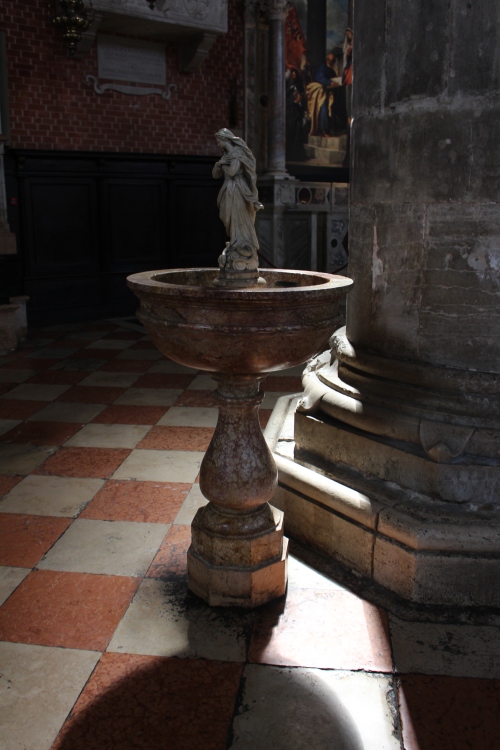
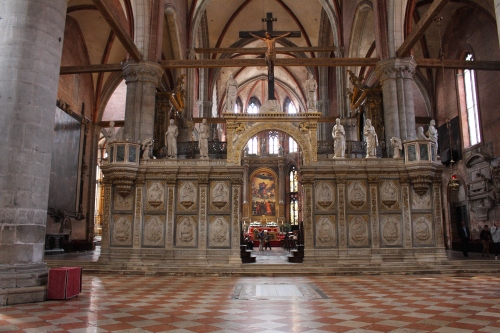
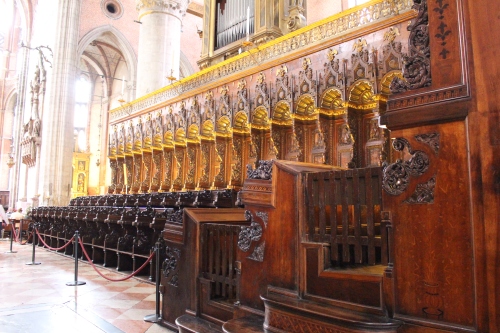
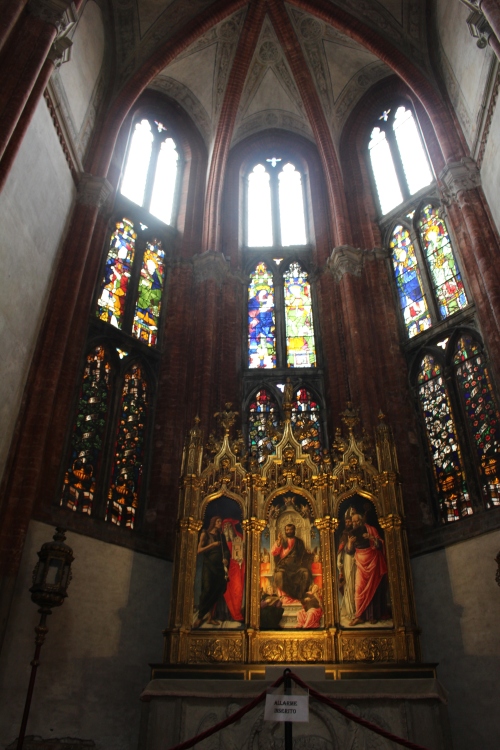
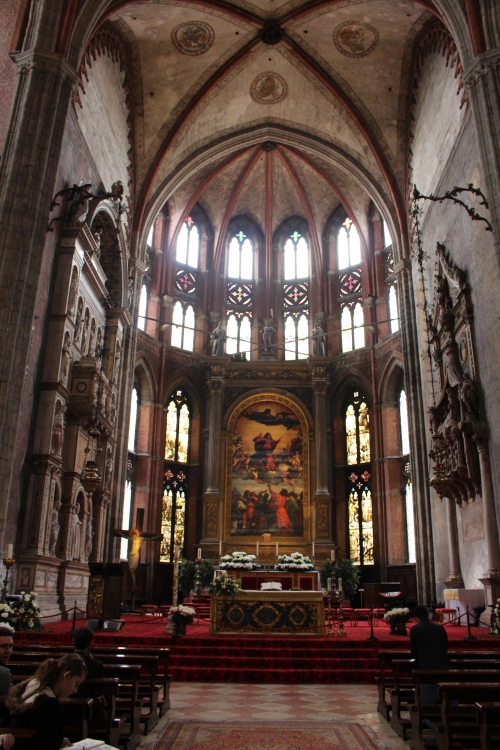
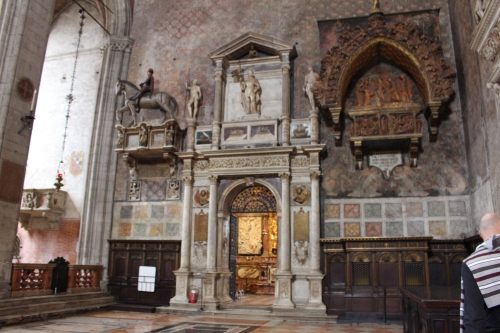
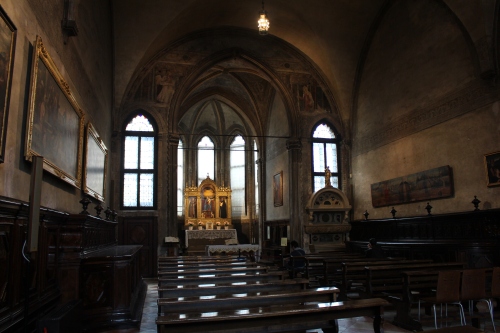
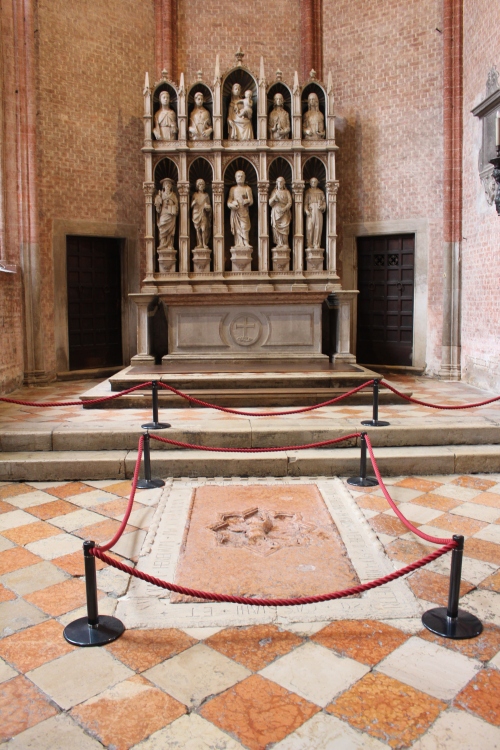
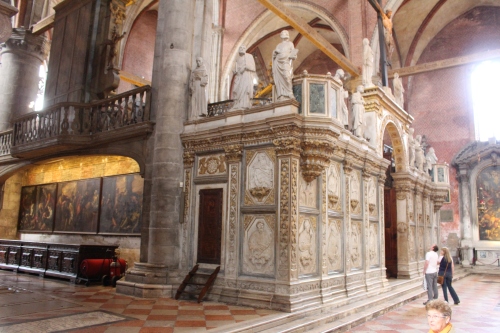
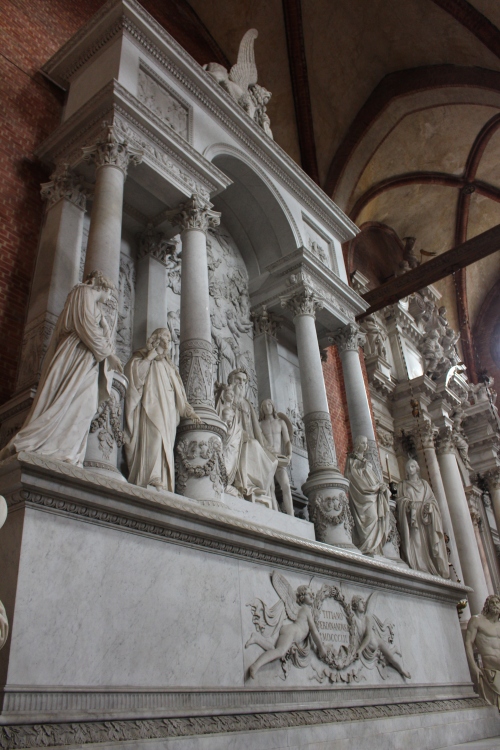
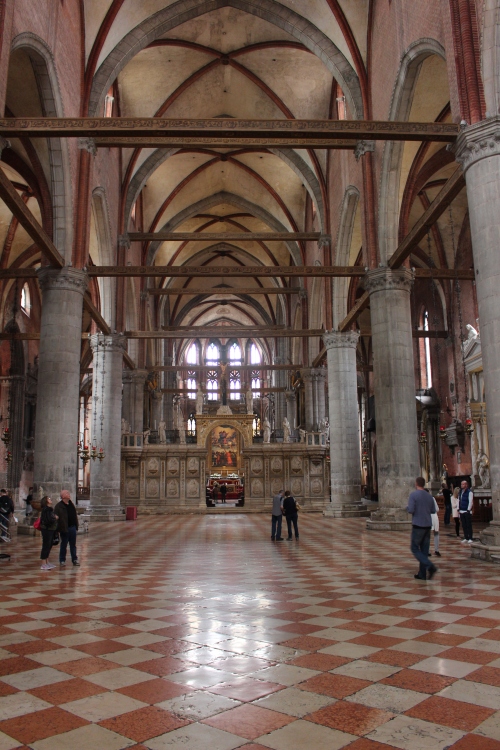
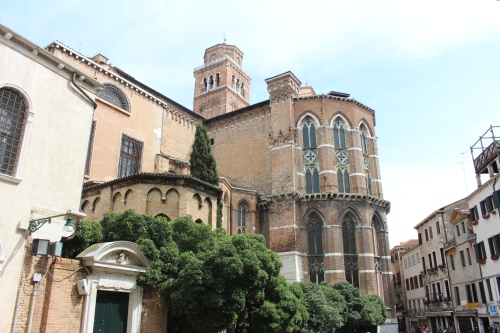
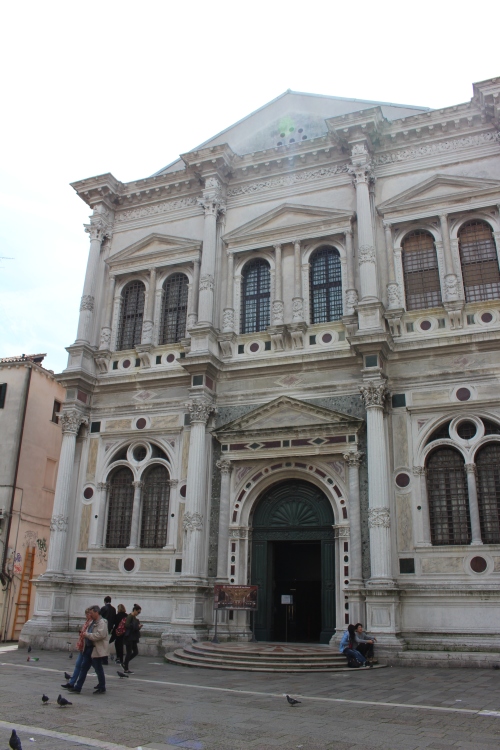
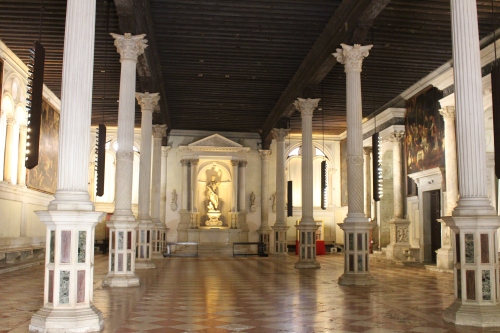
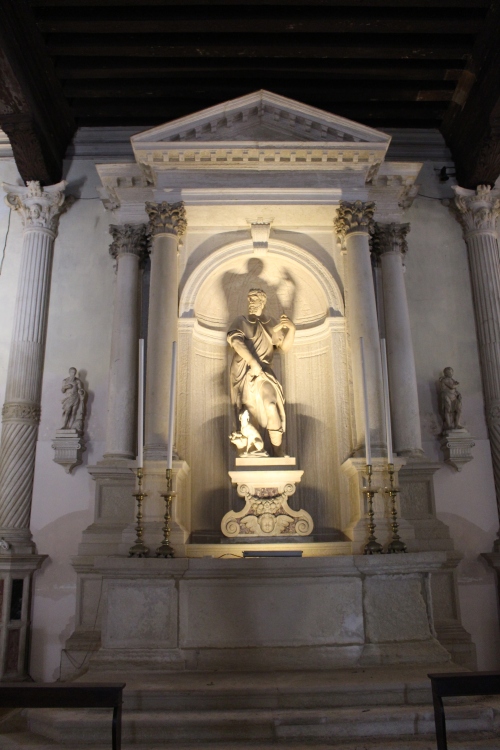
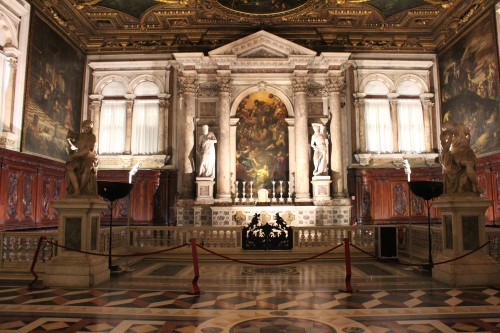
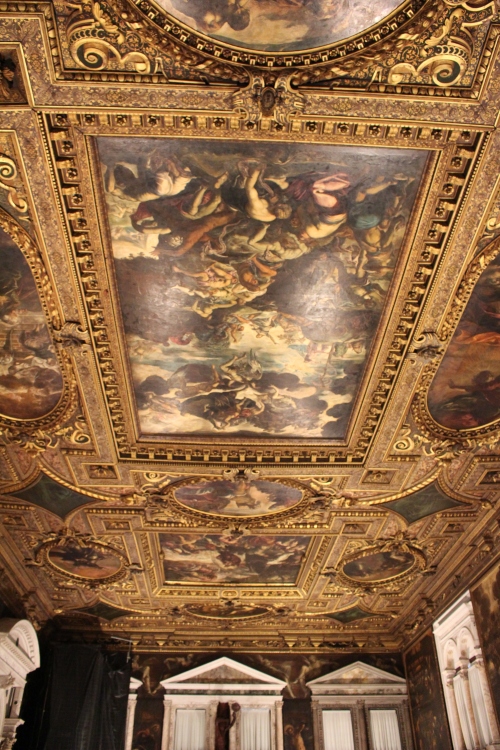
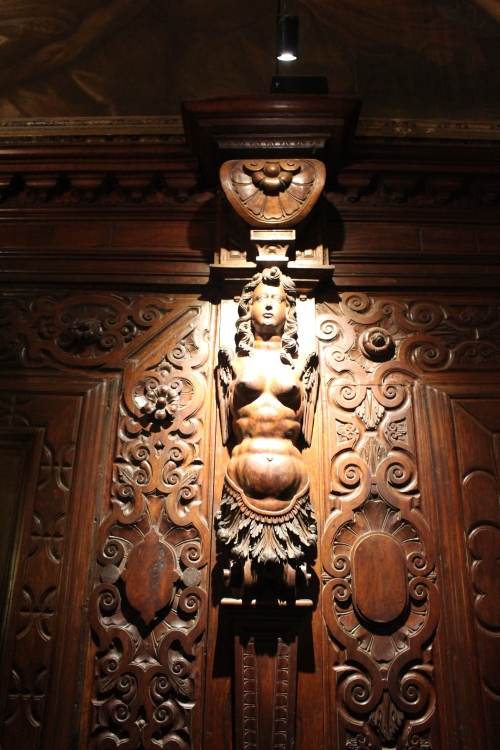
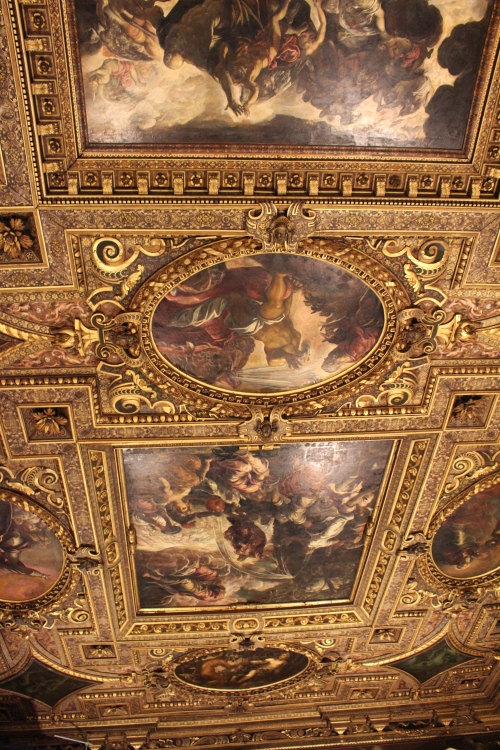









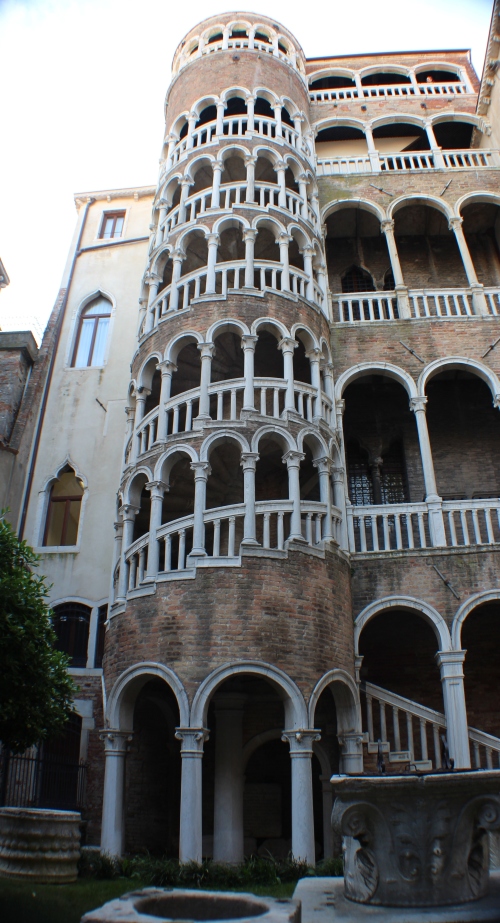
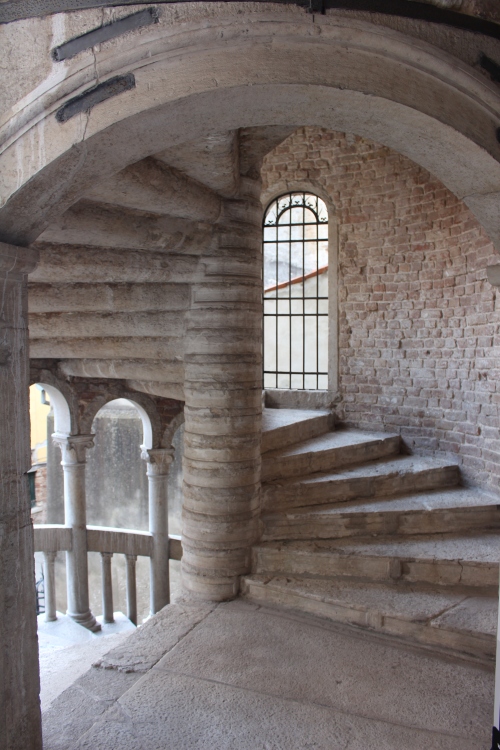
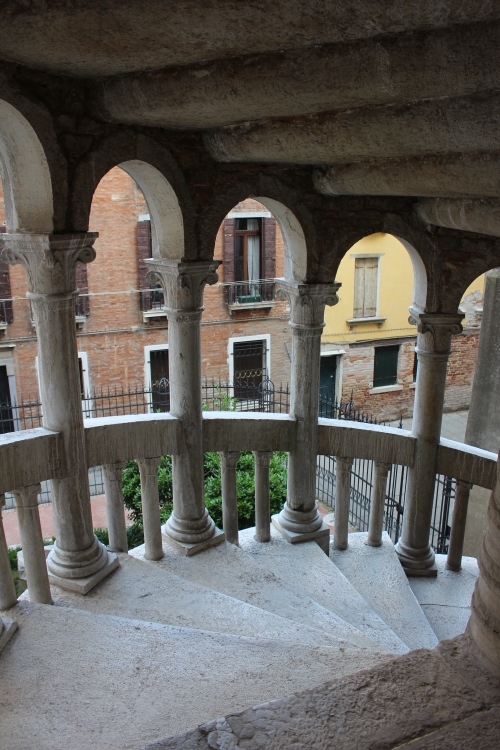
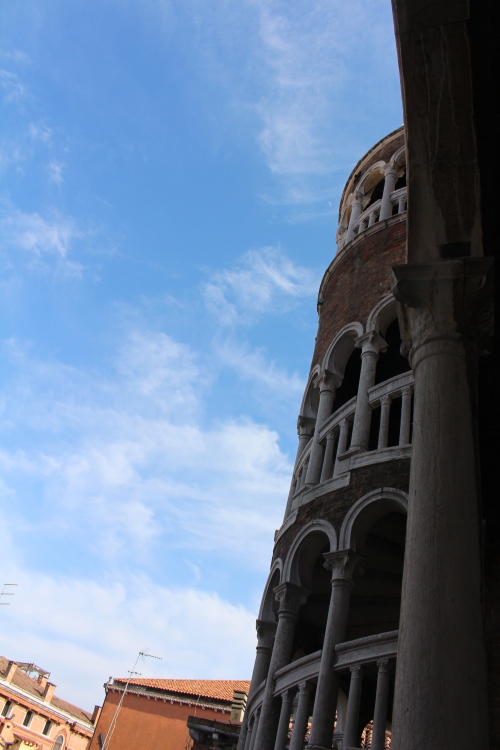
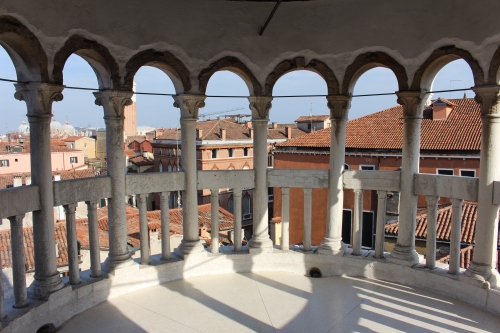
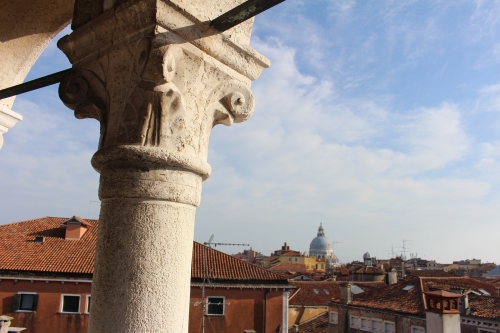
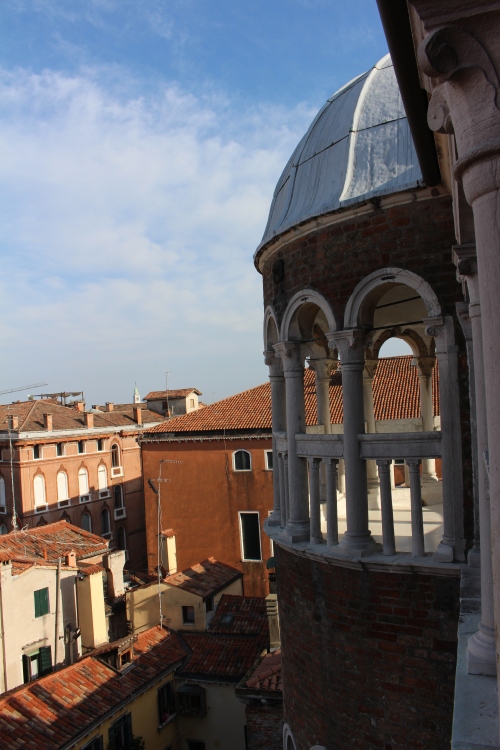
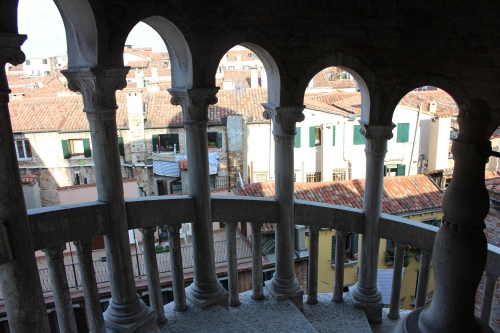
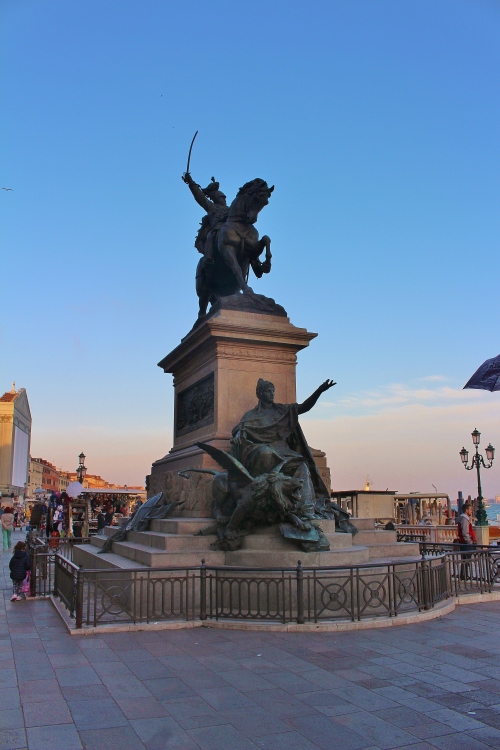
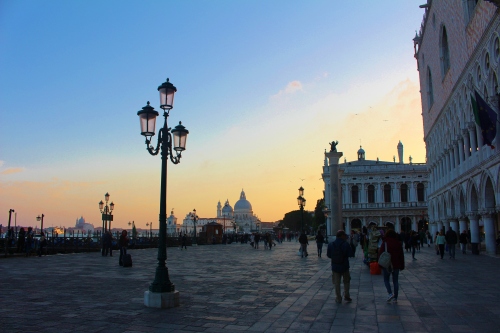
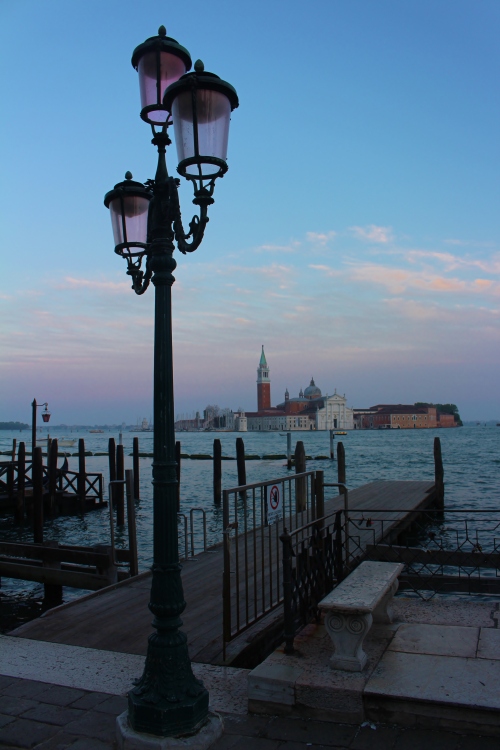
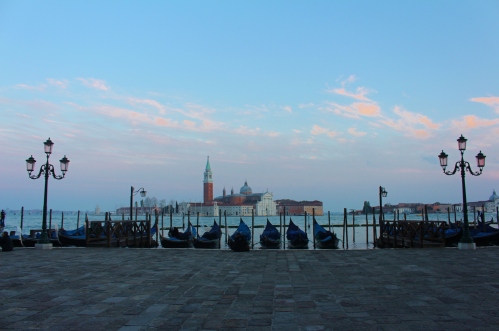
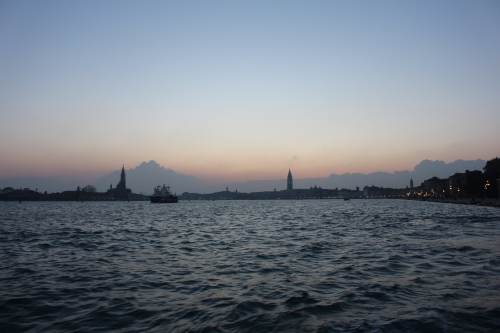





















































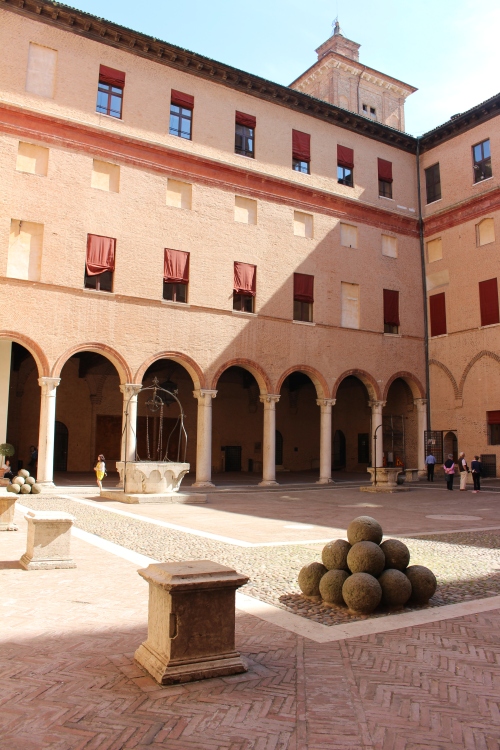
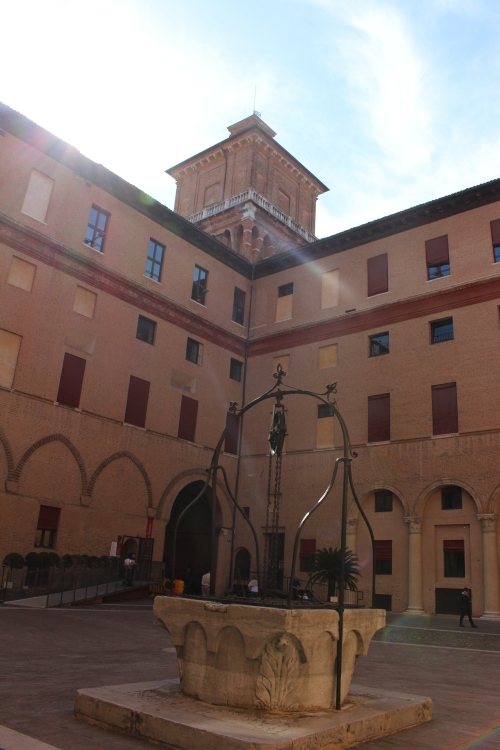


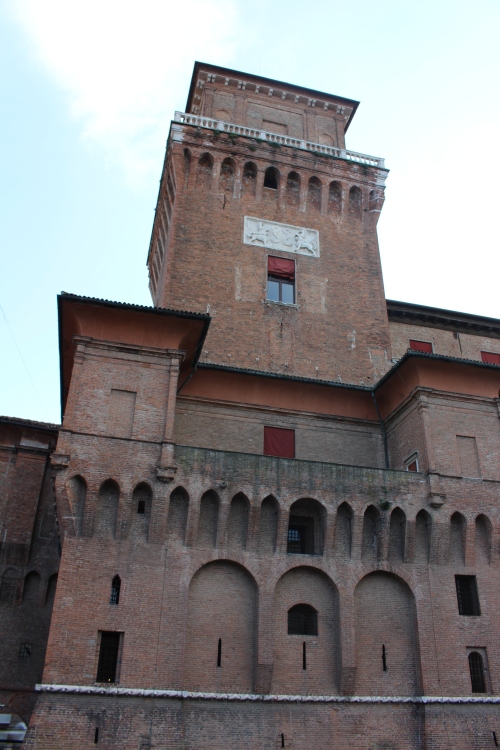
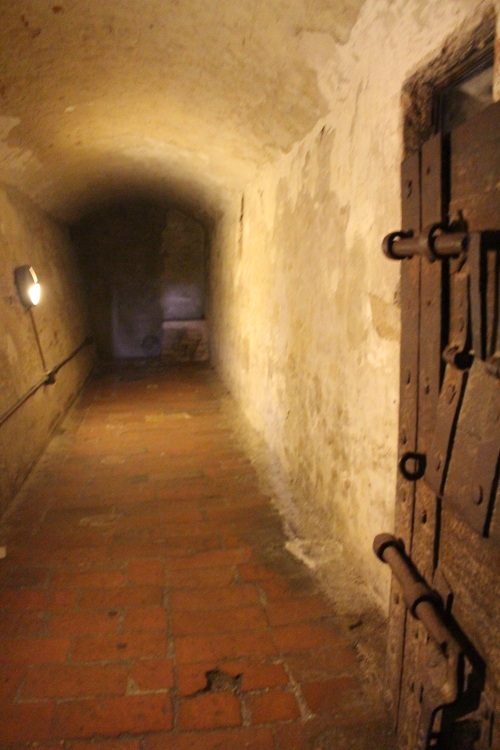
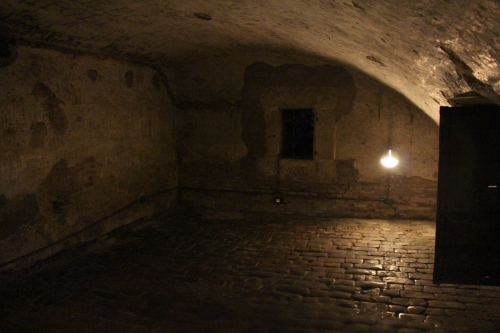 Signage in the first cell gives the information for the entire dungeon complex, but from what I can tell from a little digging is that the top cell housed Laura ‘Parasina’ Malatesta and the cell pictured below it was for Ugo d’Este. Their story would inspire poems and operas.
Signage in the first cell gives the information for the entire dungeon complex, but from what I can tell from a little digging is that the top cell housed Laura ‘Parasina’ Malatesta and the cell pictured below it was for Ugo d’Este. Their story would inspire poems and operas.